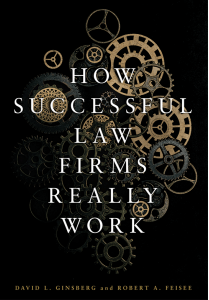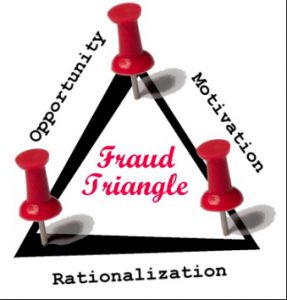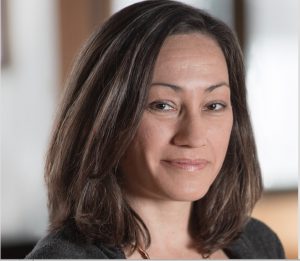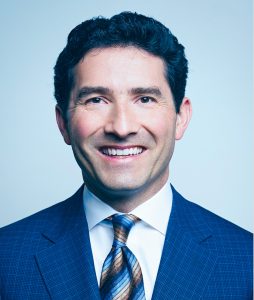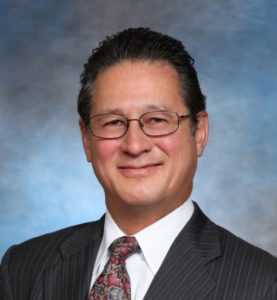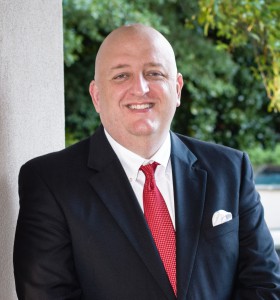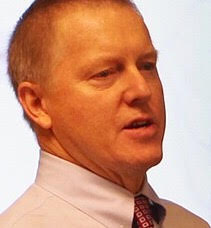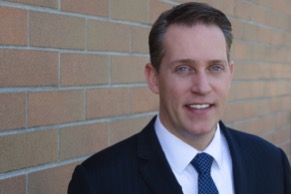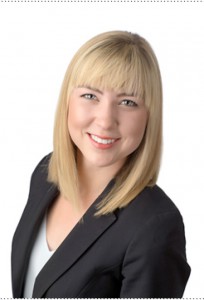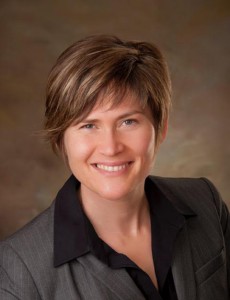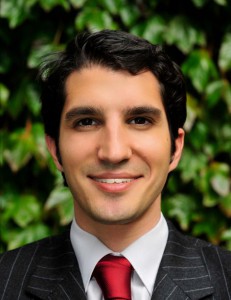♫ Together together
Were winning together
Forever and ever
You’ll be remembered
For every little thing you do for me…♫
My latest – and lead article: “Winning the War for Talent While Improving Profitability” just released in American Bar Association’s Law Practice Magazine. Co-written with my friend Steven Campbell CPA CA. https://lnkd.in/drNezZQt Deep dive into law firm finance in the context of today’s environment.
Rules For Winning the War For Talent While Improving Profitability
Law firms are facing another year of unique challenges in 2022. The big three include:
- Associate recruiting, retention and compensation (including stay and year-end bonuses), compounded by firms adjusting to work/life balance resulting from associates working from home.
- Inflation and higher interest rates impacting a firm’s ability to raise rates to match or exceed inflation.
- Changing lawyer preferences resulting from ‘back to the office’ and hybrid working arrangements.
We review the profit drivers that Robert (“Bob”) Arndt discussed in his 1988 book: “Managing the Economic Levers” published by the Section of Economics of Law Practice, American Bar Association as Bob’s advice is as relevant today as then and provides guidance in today’s environment.
Bob broke down the business of law into five categories using an acronym that he called RULES:
R = rates
U = utilization
L = leverage
E = expenses
S = Speed
Traditionally law firms raised rates to increase profitability. However, Bob suggested there are other methods, such as:
- managing the client intake process (Bob considered this to be the most important point);
- tailoring rates and billing policies to specific clients and matters;
- managing rate and billing adjustments;
- billing often and keeping the client informed;
- tying partner reward structure to rate performance; and
- reporting rates achieved.
The business of law has changed since Bob first published his principles. We propose to build on the RULES principles by incorporating analytics and new approaches to matter management to provide ideas for improving profitability and client value in today’s environment.
Rates
There are four rates that firms should monitor to understand the impact of cash leakage on profits: Standard, Negotiated (Worked), Billed, and Collected. Understanding the factors behind each rate provides insights into minimizing ‘cash leakage’ (or the reduction from billable hours worked to realized amounts), thereby improving partner profits.
Standard Rates
A standard rate is an attorney’s quoted hourly billable rate. Standard rates are more aspirational than realistic: today’s profitability surveys ask about negotiated rates. Interestingly, following the Great Recession, firms discovered that many clients measured their negotiating success by the percent discount achieved to standard rates. Firms that did not increase standard rates learned that it put them at a price disadvantage for many years against firms that continued to increase standard rates annually. With inflation running around 8% in Q1 2022, many firms plan to increase their standard rates by 8 –10%.
Negotiated Rates (Worked Rate)
Negotiated rates are agreed to adjustments from standard rates, ideally reserved for large clients with good credit and payment histories. The average firm negotiates discounts from the standard by 7.7%. Be watchful for deeper discounts: for a firm with a 30% profit margin, each 1% adjustment reduces profit by 3%. When clients persist, evaluate whether an Alternative Fee Arrangement (AFA) or blended rate is appropriate. If a client’s discount is significantly below the firm average, it may be time to terminate the client and seek more profitable work.
Billed Rates (write-downs)
Downward adjustments can occur when the billing lawyer feels the time worked exceeds the value the client received or agreed to pay. The average firm discounts worked to billed rates by 8.2%.
Sidebar:
Poor supervision to original targets: Supervisors fail to monitor delegated work.
Inexperienced lawyers: Junior lawyers learning curve and time written off for training.
Staff turnover: New lawyers having to come up to speed.
Client Guidelines: Lawyers failing to comply with client guidelines.
Scope Creep: Poor client communication.
Collected Rates (write-offs)
Write-offs occur after an account is billed and the client is either unwilling or unable to pay the account. In 2021, partial or total account write-offs averaged 9.4%.
Sidebar
Sticker Shock: Insufficient discussion with client as to the expected fees. Risk of disrupting client relationship.
Poor credit risk: Clients onboarded without ability to pay.
Contingency fees: Time written off due to poor case assessment and / or risk sharing with client.
Billed too late: Client refuses to pay as billed beyond client guidelines.
Accumulated Leaks
The amount of lost opportunity in this cycle is enormous. Assume a firm with a standard worked value of $326 million, and using the average realization deduction percentages noted above, we arrive at a net cash collection of $250M. As shown in the chart below, for every 1% improvement in realization, firm profit would increase by $3.26M.
Actions firms can take to improve realization
Working with an Am Law 200 firm during the Great Recession, when realization was dropping across the industry, we used informative analytics to help the firm improve the standard to cash collected realization by 4%.
When presented with analytics like the table above, partners were amazed at the impact of discounts they readily agreed to give previously. The partners embraced a new review procedure: all rate adjustments had to be centrally approved (in this case, by a retired partner). When clients asked for a discount, the partner could honestly say they did not have the authority to approve the request. If the client persisted, they were informed that their request had to be approved by a committee that reserved adjustments for extenuating circumstances.
The benefits of this system were:
1) it shielded the partner from being the person who had to say no; and
2) it ensured that discounts were reserved for legitimate reasons.
Further analysis revealed systemic issues that, once addressed, further improved realization. These included:
- Inconsistent standard rates: These were alleviated by implementing centrally set standard rates based on competitive rate information by practice, timekeeper seniority and geography.
- Improved and centralized client in-take process: Clients were vetted for creditworthiness, past billing, collection, and profit trends. Retainers were required for new clients.
- Improved matter intake process: All new matters required engagement letters that included the firm’s billing and collection policies.Partners were required to outline the scope and set fee budgets for all matters, proactively communicating and collaborating with clients.
- Enforced standard client arrangements as set out in the client’s SOP (Standard Operating Procedures): Clients were informed as to their fee and evergreen obligations.Time entry systems were programmed for alerts for time or expense entries inconsistent with the client SOP. This resulted in fewer pre-bill adjustments and audit exceptions, thereby speeding the time to
- Centralized contingency matter acceptance with enhanced risk assessment.
- Year-end discounts (thought to incentivize clients to pay accounts) were stopped.
Utilization
Utilization in the RULES context starts with the worked billable hours per timekeeper. The 2022 Report on the State of the Legal Market: average billable hours increased from 120 per month in 2020 to 124[1] in 2021; an annualized increase of 48 hours per timekeeper. It should be noted that 2021 results are still 120 hours per year lower than 2007, the year before the great recession.
Effective Capture & Timely Record All Time:
Studies show that when timekeepers record their activities, a significant amount of time goes unrecorded when worked in short durations, on mobiles, evenings, and weekends.
Software solutions contemporaneously capture all activities performed on most electronic devices, including email, texts, phone calls, and most computer software applications. Timekeepers can electronically review, amend, and submit these, capturing time that previously went unrecorded.
Based on a survey of users one year after we implemented such a system, we concluded that the firm captured 3.7%[2] more time, contributing an additional 11.1% profit.
The survey also concluded that the timekeepers spent 1.5% less time manually reconstructing and entering their time. Given current demand increases, this productivity gain could translate into billable hours without increasing the total number of hours that timekeepers work.
There are only so many hours in a day and most attorneys feel that they are giving all they have. But there are still metrics that a firm should monitor to help attorneys ensure that their efforts are being used as productively as possible. Some metrics are:
- Percent of billable time to total time recorded: Many of us know attorneys that are first in and last out but fail to achieve targets.This identifies those attorneys that may benefit from time management coaching.
- Uneven distribution of work: One firm introduced a Red Light / Green Light system. Attorneys choose a stoplight color from red to green, indicating how busy they expect to be in the coming week, month and quarter. New work assignments were given to lawyers with matching expertise and availability (and to those that asked for opportunities in new areas of law).
- Size of Clients: Analysis of major law firms indicates that attorneys working on smaller clients have lower billable hours.They experience small bursts of work for many clients instead of large blocks for attorneys working on more significant clients. This conclusion was drawn from a client segmentation profitability analysis.
- Freeze Hires: Based on a profitability study during the recession, a firm implemented a policy to freeze new hires for practices where total underutilization hours was greater than the equivalent hours of an FTE attorney.
Leverage
Leverage is the billable hours ratio of equity partners to other timekeepers and is one of the best drivers that lower rate firms can use to improve partner profits. Take Cole, Scott & Kissane, a 2nd 100 firm with 541 lawyers in Florida. The average profit per timekeeper was only $20K; yet the Profit per Equity Partner of $3.7M ranks it as one of Am Law’s 2020 survey’s most profitable firms. Cole achieved this result through high leverage. While leverage may not be a key factor for all practice areas, clients are increasingly seeing the value of delegating work to the least expensive, competent professional – thereby increasing leverage and profits through enhanced utilization of paralegals and other paraprofessionals.
Firms could use leverage to turn the war for talent from being money-driven to offering enhanced training and mentoring, a holistic sense of purpose, and a better work/life balance.
In the 2021 Above the Law Millennial Survey by Major, Lindsey & Africa, associates were asked what they would desire over increased salary. The results:
- 29% more time off,
- 25% flexible work schedule,
- 26% reduction in billable hours, and
- 8% more time for career, training, and development.
A Thomson Reuters survey indicates that associate turnover reached 23.2% in 2021 compared to 15% in 2020. Moreover, TR estimated that the turnover cost for an associate is 1.5 – 2 times annual salary. Based on an average 3rd year associate salary of $250,000, the cost to the firm would be $375,000- $500,000 per associate.
Let’s assume a firm with 100 associates working an average of 1,488 billable hours per year. If total associate hours remained the same and the firm hired five additional associates, then average associate hours would drop down to 1,417. By increasing leverage, the firm would have the opportunity to meet the associates’ priorities for fewer hours, flexibility, etc. and save costs over the long term. How? By cutting hours, a firm could potentially get to 2020 attrition rates, possibly lower. Assuming no salary reductions (and average salary noted above), the net savings from lower turnover ($1.5M-$2.4M) would more than pay for the compensation of the additional associates ($1.25M), as shown in the chart below.
If a firm were to follow this recommendation of increasing leverage AND addressing associates’ priorities for reduced hours, flexibility, professional development, etc, they would almost certainly improve associate satisfaction and retention. In ‘Practice What You Preach’, David Maister’s survey results found a causal relationship between employee satisfaction and profit, where a 10% satisfaction improvement causes a 25% increase in firm profit.
Expenses
Most expenses, other than rent, are expected to increase with inflation in 2022. If firms can increase negotiated rates equal to inflation, then partner profits will increase at the inflation rate. Further Net Income Profit margin improvement will come to firms that reduce their space footprint; as rent is the largest expense following salaries, those gains could be significant.
Speed
Speed refers to the time lag from the date work is done to when payment is received. Work in Process is time worked by not billed and Accounts Receivable is time that has been billed but not yet paid. WIP+AR = ‘lock up’. According to a recent PwC survey in the average firm, Lock-Up = 115 days.
One firm reduced their lock up to 78 days in a matter of two years. How could they do it?
Different approaches have been used. An imaginative approach came from a firm in Atlanta, GA. They implemented a policy whereby lawyers would be paid a princely sum of $7 a day if they submitted each day’s time by 10 am the next morning. The firm’s accountant stated: “You would be amazed at what lawyers will do for $7 a day”.
Other approaches: E-billing systems check time for date worked vs date recorded: If too long a lag, the time may not be accepted. Others watch hours recorded by day – and monitor for timekeepers attempting to game the system with time reversals.
The results on profit and working capital are clear in the numbers. Just a five day decrease in lock up increases PPEP [profit per equity partner] by over 2%.
Here are recommendations to reduce lock-up:
- Cash is King: Evaluate partners on cash collections as opposed to hours worked or billings. Link profit to cash collected, not accrual accounting.
- Determine client profit based on collections: Partners do not get credit for work done until it is collected.
- Timely Billing: Bill frequently and at time(s) where results were achieved (see the “graph of gratitude”). Bill half your clients in the first two weeks of the month and the others in the last two weeks.
- Measure the Right Indicators: Billing rate and billable hours are not the best metrics for monitoring conversion and velocity: Billable hours and billing rates are too early in the work-to-cash continuum to be meaningful. Instead, focus on collected rates and cash collections, and tie evaluations and incentives to these targets.
- Stop Work: Monitor lock-up and have a senior partner follow up with partners with delinquent clients: stop existing work, and cease taking on new matters.
- Draws: Link draws to cash management – this has been suggested many times rarely implemented.
- Engagement Letters: Use on all matters, incorporating billing and collection terms. Consider Evergreen retainers when appropriate.
- Get Timely Information: Move to real-time reporting vs. printed reports that are outdated almost immediately.
- Cut out the Speed Bumps: Client account audits slow down the collection cycle; ensure that e-bill accounts are audit-proof. There are real-time time capture tools that are very effective in ensuring client guidelines are met.
Conclusion
Working Smarter and not Harder is a well-worn maxim. Today, by following the RULES and employing effective technology tools and informative analytics, we can achieve greater profit without flogging associates to death with their billable hour requirements.
Appendix: Time Management Best Practices:
Not wishing to appear tone deaf that associates feel they are overtaxed already, the following recommendations do not suggest that timekeepers should work more hours – only that they convert more of the time they have already worked to recoverable time by following proven strategies. This further detail implements Bob Arndt’s Utilization principle and assists in reducing the time leaks noted above.
Keep track of Time Spent on All Tasks (billable and non-billable):
You need to know where you spend your time – billable and non-billable. You can see which are the unproductive time wasters and concentrate on your productive tasks. Today there are technological tools that will highlight time wasting activities.
Create a To-Do list for Tomorrow at the end of today:
Create your to-do list at the end of the day by recording all the things you need to accomplish while they are in your head. You know what you have to do tomorrow.
Identify Your Daily, Weekly and Monthly Goals:
Write down what goals you wish to accomplish by the end of the day, the end of the week and the end of the month. Listing them helps you stay on task when interruptions and distractions arise.
Prioritize Tasks:
Time management is partly developing the ability to discern what needs to be done from the rest and then doing it – promptly.
Create a To-Do list and sort your tasks into four categories:
- Important and Urgent: Do these First – they are the most important work to be done today.
- Important but not Urgent – Make room for these…they are longer term goals; schedule them into your day after the important and urgent tasks.
- Urgent but not Important – These are Time Sinks… schedule them low in priority
- Neither Important nor Urgent – Put on the Never Never list – they are not taking you towards any of your goals.
Stop Procrastinating (Today not Tomorrow!):
There are many reasons for avoiding a task, none of them good. You may be avoiding something unpleasant, time consuming or fearing failure. Failing to face up and deal with these only makes them worse. Break a large task into smaller ones. Do the most unpleasant task first. Delegate an unpleasant task (remember to return the favour in the future).
Stop being a Perfectionist:
Perfection is the enemy of task accomplishment. The 80/20 rule – 20% of your tasks will take 80% of your time. Squeeze time burners into a time budget and do them as quickly as possible. Remember “satisficing: Pursuing a course of action satisfying the minimum requirements to achieve a goal.” Send your results to the delegator asking if they wish more work to be done.
Stop Burnout by doing the Important & Urgent things today:
All of us have a ‘most productive’ time of the day. Match that time with your most important and urgent tasks and use your best energy for your most important tasks.
Seek a Time Management Mentor (Someone with good time management skills):
Mentoring is one of the benefits of working in a large firm. Find a partner who is willing to take you under his/her wing and teach you what they know.
Ask assigning Partner for a Billable Hours Goal for a Task (keep assignments on budget):
When someone assigns a task, ask “How much time do you want me to put into this before we sit down for a review?” You both establish a block of time and a deadline for the task and avoid ‘project creep’.
Take Short Breaks after each task completion:
Reward positive behavior for task accomplishment. Enjoy a short break and allow your brain to refresh.
Block off Time to Achieve Tasks in your Calendar (keep 20% time uncommitted):
Take your tasks and establish a time budget for each (hopefully with the delegator). When you run up to your time budget, re-evaluate what needs to be done and discuss with the delegator.
Limit Distractions and Interruptions:
Interruptions are a factor of life such as email. Squeeze email into three time slots (9 am, 1 pm and 5 pm) and for a fixed amount of time (20 mins).
Work from a clean desk (clutter free desk):
Clutter is a distraction and a sign of disorganization. Work from to-do lists and get the papers off your desk.
Stick to a Routine:
A routine allows you control of your life, time and tasks and structure your time to best use. You set aside the time for all the things you need to do in a certain order and priority.
Estimate how long it will take you to complete a task and compare your time against your estimate.
Break Complex Tasks into Smaller, Manageable bites:
Break bigger tasks into bite-sized chunks and allocate those to your time schedule.
Delegate if at all possible:
Delegate tasks to the lowest common competent person who can accomplish them. This will develop the skill of task management and supervision and allow you to use your time for the most important and urgent tasks in your day rather than routine matters.
None of these suggestions require a timekeeper to work more hours; this is all newfound income that goes straight to the bottom line by eliminating leaks from the billable hour boat.
One thing is clear. By paying attention to and tweaking the R.U.L.E.S., we can increase profitability, increase both associate retention and satisfaction and win the game of work – life balance. You will be remembered by your associates and partners for everything you do for them.
—
Bios:
Steven Campbell:
Steven Campbell is a Consultant with Acumen Consulting, LLC. He helps law firms develop strategies to improve performance, leveraging innovative analytics and his extensive law firm experience to provide insight and clarity.
With over 25 years of experience in AmLaw COO and law firm consulting roles (including Thomson Reuters Elite’s Business Intelligence team), Steven has been a pioneer in data-driven profitability analysis and performance management in law firms.
Steven’s deep understanding of law firm operations and challenges has enabled him to partner with firms to successfully design and implement data-driven strategies with enthusiastic adoption, achieving significant transformational results and enhancing both firm profitability and client value. You can contact him at: Steven@AcumenKPI.com and phone 313 580 0468.
David J. Bilinsky:
David J. Bilinsky is considered a visionary in how technology and other forces are changing the practice of law and how legal organizations can take advantage of these changes.
As the Practice Management Advisor and lawyer for the Law Society of British Columbia for 20 years he advised lawyers on ethics, practice management, and technology. He is a Fellow of the National Center for Technology and Dispute Resolution (NCTDR) at the University of Massachusetts and a Fellow of the College of Law Practice Management. He is the co-chair of the Law Firm Finance Board for the ABA’s Law Practice Division and past ABA TECHSHOW co-chair. He currently is the principal of Thoughtful Legal Management, a legal practice management consulting firm. You can contact him at daveb@thoughtfullaw.com and phone 778 697 7110.
[1] To November 2021
[2] Assuming a firm that had a 30% margin before the recovery of lost time, a 3.7% revenue increase translates into an 11.1% profit improvement.
♫ People say they wouldn’t change a thing, even if they could. Oh, but I would
Oh…oh, I, I’d done a lot of things different… ♫
— Music and lyrics by D. Dillon, B. Anderson, recorded by Kenny Chesney.
There is a war going on and not just the one in Ukraine. COVID, law firm management’s back-to-the-office movement, and the resultant calls for greater work-life balance from associates who have now tasted the forbidden fruit of working-from-home, have all compounded the whole associate retention, recruiting, and compensation landscape.
In the 2021 Above the Law Millennial Survey by Major, Lindsey & Africa, associates were asked what they would desire over increased salary. The results:
- 29% more time off;
- 25% flexible work schedule;
- 26% reduction in billable hours; and
- 8% more time for career, training, and development.
This clearly runs headlong into management’s goals for an annual increasing billable hour requirement or at least holding them steady from year to year.
Associates, tired of waiting for change, are voting with their feet. A Thomson Reuters survey indicates that associate turnover reached 23.2% in 2021 compared to 15% in 2020. Moreover, Thomson Reuters estimated that the turnover cost for an associate is 1.5-2 times annual salary. Based on a 3rd year associate salary of $200,000, the cost to the firm would be $300,000-$400,000 per associate.
What is the usual grounds for competition between firms for associates? Greater associate compensation — which in turn translates into increasing hourly rates charged to clients with resultant — and expected — pushback.
Is there a win-win in this situation? I believe so. The solution is to adopt procedures that tighten up the financial boat and allow for a greater percentage of fees worked to be collected, thereby reducing the sheer volume of work being performed.
There are a number of policy changes that can increase the bottom line without causing lawyer burnout. One is to reduce the leaks in the billable hour boat. This starts at the client intake process. By vetting clients carefully and mandating written retainer letters with evergreen retainer and collection clauses on all new matters, the resultant account write-downs and write-offs can be reduced to a minimum. Increasing billing frequency keeps the client informed on the state and cost of the work to date. Having associates and partners review files frequently with clients cuts down on “scope creep” and resultant sticker shock. Time capture software can reduce unrecorded time spent on mobiles, evenings, and weekends.
A simple policy of requiring daily time submission cuts down on lawyers reconstructing their daily time entries with resultant missed entries. A firm in Atlanta, GA paid their timekeepers $7/day if the time entries were in by 10 a.m. the next day. Their CFO stated: “You would be amazed at what lawyers will do for $7 a day.”
Another technique is to reduce “lock-up” — the time between time worked and time paid. Clients have introduced policies to refuse time that is too old; firms have backed this up by setting time and billing systems to reinforce this. Having a partner being told that the client will not be billed, and he will not be paid, for his 45 worked hours because they are too late certainly brings home the point of timely time entry.
Bill in accordance with Jay Foonberg’s “Graph of Gratitude.” Jay Foonberg is both a CPA and a lawyer and the author of the venerable “How to Start and Build a Law Practice” (now in its 6th edition). In his graph, you can see when is the best time to render an account based on when the work was done. Gratitude does not age well — send your bill before it has eroded. By maximizing your account collections, you and your colleagues don’t have to bill 115% of your target collected income just to realize 100% of your collected fees target.
While measuring billable targets and billable rates are fine, they are too early in the cash flow cycle to translate into cash in hand. Make sure you are measuring collected rates and cash collections and tie these metrics to performance evaluations to keep your time billers focused on producing work that leads to collections and not just monthly invoice targets.
Lastly, pay draws based on accounts paid, not fees billed. Cash is king and notwithstanding accountants and their accrual systems, you can’t spend cash you haven’t received.
These are a sampling of the techniques that can be implemented by law firms to increase their bottom line without flogging associates and partners to death and hopefully increasing associates quality of life. We can do a lot of things different.
Time Management is the Flip Side of the Coin to Billing Time
Better time management can reduce long hours in the office spent meeting your billable time goal. Here are a selection of time management best practices:
Keep track of time spent on all tasks (billable and non-billable): You need to know where you spend your time — billable and non-billable. You can see which are the unproductive time wasters and concentrate on your productive tasks. Today there are technological tools that will highlight time wasting activities.
Prioritize tasks: Time management is partly developing the ability to discern what needs to be done from the rest and then doing it — promptly.
Create a To-Do list and sort your tasks into four categories:
Important and Urgent: Do these First — they are the most important work to be done today.
Important but not Urgent: Make room for these… they are longer term goals; schedule them into your day after the important and urgent tasks.
Urgent but not Important: These are Time Sinks… schedule them low in priority.
Neither Important nor Urgent: Put on the Never Never list — they are not taking you toward any of your goals.
Ask assigning partner for a billable hours goal for a task (keep assignments on budget): When someone assigns a task, ask “How much time do you want me to put into this before we sit down for a review?” You both establish a block of time and a deadline for the task and avoid “project creep.”
Break complex tasks into smaller, manageable bites: Break bigger tasks into bite-sized chunks and allocate those to your time schedule.
This article is excerpted from an upcoming article on the Rules For Winning The War For Talent While Improving Profitability by Steven Campbell CPA and David J. Bilinsky for the American Bar Association’s Law Practice Magazine. Steven Campbell is a Consultant with Acumen Consulting, LLC. Steven has been a pioneer in data-driven profitability analysis and performance management in law firms.
(This article previously appeared at PracticeTalk and Tech Tips in the CBA Publication Bartalk for June 2022.
https://www.cbabc.org/BarTalk/Articles/2022/June/Columns/The-War-for-Talent
♫ Nobody does it better
Makes me feel sad for the rest
Nobody does it half as good as you
Baby, you’re the best…♫
Lyrics and music by: Marvin Hamlisch, Carole Sager, recorded by Carly Simon.
I haven’t done a book report in a good long while. But I am going to make an exception this time.
A book has come along that every lawyer who wishes to run a firm at its peak should not only have on his/her shelf but it should be well-thumbed, stained from coffee spills, its cover torn from constant use and sitting on the corner of their desk within arm’s reach for quick reference. I am speaking of “How Successful Law Firms Really Work” by David L. Ginsberg and Robert A. Feisee, published by the American Bar Association, Law Practice Division (“HSLFRW”)
A few books have been written that outline how to run a law firm. “How to Start and Build a Law Practice” by Jay Foonberg, now in its 6th edition, is perhaps the grand-daddy of them all. But Ginsberg and Feisee have taken all the collective wisdom of running a law practice and condensed it into 332 pages of sage advice. Is it the bee-all and end-all of law practice management books? No – but it is an excellent compilation and overview from a 50,000 foot perch, of the things that you should consider in keeping all the balls of legal management in the air. From here you would be well-versed into jumping into any number of books that address the specific needs of law firm management for greater in-depth knowledge.
Who is it aimed at? HSLFRW focuses on the operation of a small to medium sized law firm. It is designed to aid you in the step-by-step creation of your customized business plan by addressing the issues raised in each successive chapter. But it is more than that. It integrates and builds on each chapter by illuminating and then integrating concepts so that you come out of the process with an appreciation of how each pillar upholds the operation of a law firm works and with its companions.
The book starts with a chapter “How to Use This Book” which starts a reader off on the right foot in terms of how to make the most of what is set out in the subsequent chapters. The premise is that lawyers, no matter how brilliant, may lack basic business skills; and it seeks to help lawyers of all levels master and implement proven business strategies.
The book starts with questions of ownership and how to structure your team for maximum effect. Since all firms rise or fall by their people, human resources comes next. Moving on to training, it deals with issues of how to mold your staff and professionals into an efficient and productive team.
Managing your time is next, since you will have to be able to schedule management tasks as well as legal work into your daily schedule and keep all pots, so to speak, on a constant simmer.
With the fundamentals taken care of the book moves to clients: Who are your ideal clients and how do you market to them and then manage them. What does your legal product look like and how do you deliver services within a clearly defined scope of work. What is your role relative to your clients? Emphasizing that ethics underpins all that you do, a chapter on how to stay out of trouble is next.
Then we jump to more of the nitty-gritty of running a firm. Finances, budgeting and managing money is next; followed by technology and systems. Since firms run on procedures, there is a chapter on how to develop procedures customized for your firm.
Next is your office environment – how does your firm look and how does it operate? Which one are you – a business or a profession – and the implications of viewing your firm each way and what is your definition of success?
Strategic Planning – both short and long term – are included as are emergency planning and wellness: how to care for yourself.
Lastly the book concludes with the statement that you are now ready to run your own firm.
Whether for lawyers just starting out or for lawyers seeking to make partner or better yet, managing partner and desiring knowledge to take them to the next level, this book is a tour-de-force. At $85 for non-ABA members, $68 for ABA members (all USD) it is a steal. You can order it online from the ABA here.
This book is so good it makes me sad for the rest. I have but one regret with regards to it…I wish I had written it.
© 2022 David J. Bilinsky
(Concurrently published both on http://slaw.ca and this blog.)
♫ But there never seems to be enough time
To do the things you want to do,
once you find them… ♫
— Music, Lyrics and recorded by Jim Croce.
What is the one thing we all own in equal measure, every day? The answer is simply enough — Time. We all take our daily allotment and spend it on work, pleasure, things we have to do, things we want to do, things we wished we didn’t have to do, things that waste time, and more. How we use it can make us happy, it can make us sad, it can bring about positive change to the world, it can bring a smile to someone’s face, or sadness to another. Two things we can’t do with it is bank it or get more of it. Accordingly, let’s spend a little time to explore how to best manage our time.
The first step is to write down your goals. These are not just work and career goals but life goals as well. You may want to make partner or launch your own firm. You may wish to do public advocacy work or learn to play a musical instrument or write a play. You may wish to ski more often, run a marathon, or travel. The point is that goals unset are goals unmet. What does success mean to you? Rank your life’s goals, research what has to be done to achieve them and then develop a plan that will take you to your life’s goals.
Next, write out the tasks that will take you toward your life goals and those that others have set for you. Each task should take you closer to a goal.
Remember that tasks should be S.M.A.R.T.: Specific, Measurable, Attainable, Relevant, and Time Based.
- Specific: Goals should be tightly focused and clear so you can foresee the steps that need to be taken for goal achievement.
- Measurable: What gets measured gets done. Have milestones set that allow you to judge your progress toward goal achievement.
- Attainable: Do you have what you need to achieve your goal? Or do you have to gain experience, education, skills, or credentials to do this? Perhaps you need to set sub-goals to take you toward your big goal.
- Relevant: Do your tasks bring you closer to your life’s goals?
- Time Based: Set a deadline for each task to hold yourself accountable.
Now, sort out your tasks into four categories:
- Important and urgent: +I+U
- Important but not urgent: +I~U
- Urgent but not important: +U~I
- Not urgent and not important: ~U~I
Sorting your tasks starts the process of prioritization:
- +I+U: Do these tasks right away.
- +I~U: These are your long-term goals. Set aside time for these in your day!
- +U~I: Delegate these tasks if possible. If not, schedule them lower in priority.
- ~U~I: Set these aside to do later, if ever (typically time wasters).
Create a “To Do” list from your priorities and keep it on your desk. This allows you to keep your priorities in front of you at all times. Organize your desk and remove clutter — those are usually distractions.
Develop good time management skills and habits. Good time management skills can be learned and nurtured over time and will only increase your value to your firm, to your family, and of course, to yourself. They will allow you to find time to do the things you enjoy.
Set a time budget and allocate a set time to each task and then block off time in your daily calendar based on your tasks. Once a task time is up — evaluate what has to be done to complete the task, create a new To-Do, sort your To-Dos again, and start the next task.
Cut out all time-wasting activities. Reward yourself for task accomplishment with a small break and reward. Reinforce how good time management works for you and clears your To-Do list as you work through your day.
Remember that procrastination is the enemy of goal achievement. Procrastination can be a sign of a fear of success, a fear of failure, that you don’t deserve your life’s goal or find a task overwhelming. When the urge to procrastinate comes on, counter it by immediately working a bit on your goal and a task and experience the relief in having started. Break down a big task into smaller portions and conquer each in turn and watch your progress.
Plan to deal with obstacles and interruptions. If someone walks into your office and looks to be staying, grab your coffee cup and head off to the coffee machine. They can talk while you get a coffee and — you got them out of your office!
Resolve to stop multitasking. It may feel like you are accomplishing a lot, but that doesn’t stand up. According to bit.ly/bt0422pt-1:
“Studies now show that multitasking can actually damage the brain. As the brain can primarily focus on one thing at a time, keeping track of multiple things at once or accepting multiple streams of information can lead to decreased productivity and distraction from the task at hand.”
Consistently work on your Important but not Urgent: +I~U tasks. These are the ones that will change your life’s path as you desire it to be. Plan your tasks to gradually move yourself into the area(s) of practice in which you desire to be. Measure your progress to stay motivated!
Set a daily billable time goal and track your progress to it throughout your day. You owe it to your family, your firm, and not the least of all, to yourself to grow into being a more effective and responsible lawyer each and every day. Hold yourself accountable for your progress and reward yourself for achieving your daily billable time goal.
Track all your time — billable and non-billable. There are many reasons for doing this. By seeing where you are spending your time, you increase accountability to yourself and to others. Tracking all your time increases your focus on your +I+U tasks. It exposes your time wasters, time sinks, and traps. It prevents project creep, by keeping tasks within their allocated time budget. You enhance your personal bottom line, which in turn benefits yourself and your practice. Most importantly, it will gradually transform you into a better lawyer.
Prevent leaks in your time boat. There are many possible ways to leak billable time. The first is the failure to accurately capture time. Up to 40% of your billable time can be lost if not recorded contemporaneously with task completion. A second is to write off billable time at the time of billing. A third is to reduce an invoice to receive payment. A final one is to write off an entire bill as uncollectible. Plug the leaks in your financial boat by using your time to achieve effective client objectives. Remember client satisfaction ulti-mately drives collections.
Having an accurate billable and non-billable time record allows you to perform analytics on your time and finances. A “Key Statistics” report will show you the financial health of your practice at a glance with such indicators as: Effective Hourly Rate, Work In Progress, Billings, Billing Turnover, your Billing Realization, your Collection Realization Rate, and many more.
Accurate time records will also allow you to forecast your future cash flows and track them against your cash flow needs, providing you with feedback on your financial health and providing you with needed information for cash flow management.
Lastly, pass on your hard-earned knowledge. Teach younger lawyers your time management skills. Act as a time mentor and help grow the next generation of associates into lawyers and partners your firm will value.
Good time management skills can help us all make the most of this most precious of resources, and thereby find the time to do the things we want to do, once we find them.
(c) 2022 David J. Bilinsky
(originally published in PracticeTalk in the Canadian Bar Association’s BarTalk magazine: https://bit.ly/3qSFo04)
♫ All the little birdies on Jaybird Street
Love to hear the robin go tweet tweet tweet…♫
Music and Lyrics by Thomas Jimmie, recorded by Michael Jackson.
Would you pay attention to an emerging marketing platform that has seen a 663% increase in people over the last two years looking for recommendations around professional services? I would imagine you would. Twitter is that platform. Now: how many of you have a thoughtful, continual and strategic presence on Twitter that engages the community from which you draw your clients? While we are at it, how many of you have a digital media marketing plan that includes Twitter and other social media platforms? If not, according to research carried out in the UK by Orange Business, you may be overlooking a big opportunity: “[S]econd on the list are solicitors, who may not be aware of the fees they could be missing out on by not engaging with the public and other businesses via Twitter,” (https://www.legalfutures.co.uk/latest-news/twitter-becoming-key-referral-source-for-solicitors-says-research).
Orange notes that lawyers need to do more than just be ‘on’ Twitter. You need to demonstrate your expertise, show that you know what you are talking about and share information far and wide. In other words, your Twitter presence should be part of a comprehensive and strategic social media marketing plan (a “SMMP”).
How do you build your SMMP?
First, you need to learn about how SM is being used by lawyers in your area(s) or practice. Look inwards and determine which services you provide that you wish to market and learn how other lawyers (perhaps in other jurisdictions) are using SM in relation to these services. Are they engaging on Twitter and if so, what hashtags are they using? Did they create YouTube videos that speak to their knowledge of an area of law? Are they on Facebook and if so, have they posted videos, articles or interviews? How about Instagram? Reddit? Quora? Snapchat? The idea is to think beyond LinkedIn, which frankly, every lawyer should already be on.
Now, determine what people are saying about you and your firm on SM. Research using Google, Facebook, Twitter and other SM platforms and see what is being said about you and your firm, if anything. This gives you a starting point together with an assessment of the SM landscape.
Determine how your target clients are holding conversations in SM that are relevant to you and your firm. What topics are they discussing? This gives you a target of where you need to be in terms of platforms and topics.
Now set your strategy. How are you going to go about SM posts? Videos? Photos? Articles? Will you engage in Twitter conversations on select topics? Comment on recent cases (hint: don’t use your recent cases – too easy to breach client confidentiality). Establish SM goals for your marketing focus.
Schedule your time and updates for SM. You will need regular, consistent and timely updates. How much time and money will you expend? Set a budget.
Set up the metrics that you will use in determining if you are meeting your goals. You need to see if you efforts are bearing fruit.
Reach out and experiment and start to build your SM networks. Follow people. Comment. Experiment. Learn how people use the different platforms and become part of the community. Don’t hesitate to consult with SM experts to save time and speed up the process.
Your SM presence should aim to refer people back to your blog where your more detailed content is located and where people can learn about you (after all this is social media). Your blog is where you demonstrate your in-depth knowledge via the posts that you have written and people can find your contact information.
Unlike an advertisement, SM is a dialogue with your potential clients. Your skillful tweet tweet tweet can take you from being just another birdie in the tree to a rocking robin.
—
Who are the knowledgeable legal marketing personalities and organizations that are available to assist you in your marketing journey?
LMA: The Legal Marketing Association is an international organization composed of consultants, vendors, lawyers, marketers from other professions, and marketing students. It has a Western Canadian Regional Governing Board, with Vancouver’s own Susan Van Dyke of Van Dyke Marketing & Communications as the 2019 President. They are a tremendous resource for all areas of legal marketing. Follow their blog to stay current on news, trends and more. blog.legalmarketing.org
In terms of on-line presence, you should be able to learn a great deal about legal marketing by seeing what advice experts in the field place on their blogs and web pages – for free. Examples of their work allows you to gauge the impact of their work; awards allow you to determine what their peers are saying about them. Here is a sampling of those people and organizations that I and others, consider strongly influential.
Skunkworks: The team at Skunkworks have become a local tour de force for lawyers and law firms here in BC. Doug Jasinski, Marnie MacLeod and Jeremy Hessing-Lewis have all done their time in the legal trenches and speak the language of lawyers and marketing. Their blog and examples of their work are a good place to start to see what local firms have achieved in thinking about their marketing message. https://skunkworks.ca/blog/
Stemlegal: Steve Matthews and his group form a web development, publishing and strategy juggernaut for the legal profession. They are a local company with a national presence and influence. Steve is tireless – not only does he look after his legal marketing company, he manages slaw.ca – Canada’s online legal magazine, he runs lawblogs.ca – Canada’s comprehensive listing of Canadian Legal Blogs, legalpubs.ca – which tracks the latest in Canadian legal publications and runs ClawBies.ca – Canada’s annual legal blogging awards.
Eva Chan: After practising advertising, marketing, and IT law at a national Canadian law firm for over 10 years, Eva is now a social media strategist, consultant and trainer. More to the point she provides social media-related services to lawyers and law firms. A ClawBie award winner, her blog https://www.evachanweb.ca/blog/ has articles such as Social Media Opportunities and Risks, How To Write an Engaging Social Media Post and Twitter tricks and treats (aka tips). She asks (and answers) such questions as: What One Thing to Advance Women in Law Will You Do?
Fishman Marketing: Ross Fishman, although located in Chicago, has a strong presence here in Vancouver. His web site is loaded with great advice and insights into the world of legal marketing. Review his numerous case studies to gain insights into his thinking and work. Subscribe to his blog to stay current on his innovative ideas. https://www.fishmanmarketing.com/blog-2/
The Rainmakers Blog: Stephen Fairley consistently receives accolades for perhaps the best legal marketing blog on the Internet. A recent post was one of my favourites: 5 Ways to Attract your Ideal Client. Another was: How to Determine Which Social Media Networks Work Best for Your Firm. https://www.therainmakerblog.com
(Published by the Canadian Bar Association in their publication Bartalk in the columns: PracticeTalk and Dave’s Tech Tips in December 2019. The post has been updated slightly.)
“Some changes are so slow, you don’t notice them, others are so fast, they don’t notice you.” —Ashleigh Brilliant
BC’s Innovative online system resolves thousands of legal disputes—usually without lawyers.
On July 13, 2016, the legal world changed in a small but significant way when an Online Dispute Resolution (ODR) Tribunal started taking its first cases in British Columbia, Canada. BC’s Civil Resolution Tribunal (CRT) drew on prior private law examples such as eBay and PayPal’s ODR resolution platform. EBay was the proof of concept of ODR: By 2010, it was handling over 60 million disputes each year, most of which were fully resolved by the parties without any additional human intervention.
This development came after academics, scholars, the United Nations, universities, governments, private industry, lawyers and nonlawyers long debated the potential of using the power, reach and resources of the internet to settle legal disputes. This was the first time government provided a mechanism for parties to settle a dispute in a totally online forum.
THE ORIGINS OF ODR
Colin Rule, who played a leading role in the creation of PayPal’s ODR platform, is one of two recipients of the 2020 inaugural Frank E.A. Sander Innovation in ADR Award from the ABA Center for Innovation and the ABA Section of Dispute Resolution. Rule has led the development and expansion of ODR since 1999, but over the past five years he has been a key driver behind international efforts to expand access to justice by integrating court ODR into the legal system.
Much of the work in the field of ODR is based, directly or indirectly, on Rule’s innovative thinking and work in this area while first at eBay, then Modria, an ODR provider, and latterly as vice president for ODR at Tyler Technologies, together with his colleagues’ work from the National Center for Technology & Dispute Resolution (http://odr.info) at the University of Massachusetts Amherst.
There are two general types of ODR. One type focuses on using the algorithmic power of computers to help people resolve their issues. This branch uses computing power to help parties reach an optimized solution that both sides can accept, or it can help parties overcome obstacles and reach agreement.
And per a 2013 Canadian Arbitration and Mediation Journal column, “Online Dispute Resolution: The Future of ADR,” written in conjunction with Rule and Dr. Frank Fowlie:
The second [type of ODR] focuses on using computers to facilitate human communication. Instead of having the computer processor analyze data and make recommendations, this branch uses information and communications technologies to assist the interaction between the parties, helping them to reach mutually acceptable solutions. … The computer is used to create a virtual meeting space, one specifically tailored to best meet the needs of the disputants.
This second type of ODR is what the CRT is patterned on.
IMPLEMENTATION OF THE CRT
Since its launch, the CRT’s jurisdiction has steadily expanded. On July 13, 2016, the system began accepting disputes involving owners and tenants of condominium properties and corporations. On June 1, 2017, its jurisdiction expanded to small claims (all disputes $5,000 and under, such as debt or damages, recovery of personal property, personal injury and specific performance of agreements involving personal property or services). On April 1, 2019, its jurisdiction was expanded again to include certain motor vehicle accident disputes. For instance, if the CRT determines that a person’s injury is minor, damages for pain and suffering are limited to $5,500.
Importantly, the CRT’s jurisdiction is not concurrent with the courts; it is exclusive—and the vast majority of CRT decisions are final and binding on the parties. Within its legal jurisdiction, a claimant has a very limited ability to move a dispute out of the CRT to the courts. Furthermore, there is limited ability to challenge the decision of the CRT; a party unhappy with the outcome can, in most cases, only apply for judicial review of the decision on a standard of patent unreasonableness. In small claims matters, a party may file a notice of objection, which results in a new process being started in the Provincial Court. However, a financial deposit may need to be made, and the Provincial Court may assess a penalty if the person objecting doesn’t receive a better outcome than the CRT decision.
THE CRT PROCESS
As a starting place, the CRT platform contains a Solution Explorer that includes legal information and self-help tools in such areas as buying and selling, housing, loans and debts, construction, employment, insurance and property, as well as general disputes. The platform then guides potential parties through a question-and-answer protocol to lead them to relevant legal information.
For example, assume someone had a prepaid purchase card (a gift card preloaded with a certain amount of money) and was charged a fee by a merchant for using the card. The Solution Explorer would guide the party to information that would inform them that, under British Columbia law, such a fee may not be charged, and explains to the party how to claim a refund by writing to Consumer Protection BC and filing a complaint.
If the nature of the complaint is such that a legal claim needs to be initiated, then the Solution Explorer provides online guides on how to file a claim. A case is initiated by completing the appropriate form from the “Make a Claim with the CRT” webpage. The CRT is designed to try to assist the parties to craft their own solution. If a solution cannot be reached by negotiation between the parties or facilitated by a CRT case manager, then a hearing can be held by the CRT. This hearing can take place by email, by electronic submissions, paper submissions or, in rare occasions, via an oral hearing by telephone, videoconference or in person. Evidence can be submitted, including expert evidence.
The CRT is certainly applying a different mindset to the process of civil dispute resolution––largely without lawyers. In proceedings before the CRT, the ability to be represented by a lawyer is curtailed.
THE ROLE OF ATTORNEYS
As of June 2020 [ED: the original article has earlier stats, this version has been updated], the CRT has handled 17,238 disputes—14,362 small claims and 2,701 strata property disputes. The system has closed 15,644 disputes, including 13,187 small claims disputes, and 2,333 strata disputes were closed and of those, 907 strata property disputes were determined by adjudication. There were much smaller numbers of motor vehicle disputes and society and cooperative association disputes, and 78 percent of participants would recommend the CRT to others, according to the Civil Resolution Tribunal’s April 2020 Participant Satisfaction Survey.
Albert Einstein once said: “A new type of thinking is essential if mankind is to survive and move to higher levels.” The CRT is certainly applying a different mindset to the process of civil dispute resolution—largely without lawyers. In proceedings before the CRT, the ability to be represented by a lawyer is curtailed.
In motor vehicle injury disputes, litigants can automatically be represented by a lawyer. However, in most other cases, parties need to ask the CRT for permission if they want to be represented by a lawyer. And, in all cases, if a party wants someone other than a lawyer to represent them, they must receive permission. There are exceptions for minors and persons with impaired mental capacity. At any time during the tribunal process, a case manager or tribunal member can restrict the participation of a person providing representation or assistance in the tribunal process.
Traditionally, lawyers have opposed changes to the adversarial method of dispute resolution. Lawyers can continue to oppose meaningful changes to the legal and justice system that would result in greater access to justice; however, they do so at their peril. They may just wake up one day and find that change happened, and that change did not include them. The example of the CRT is just one of those changes that is likely to expand and fundamentally change the process of dispute resolution. LP
(This article appeared originally in the Big Ideas Issue, Law Practice Magazine, July 1, 2020 (https://www.americanbar.org/groups/law_practice/publications/law_practice_magazine/2020/ja2020/ja20bilinsky/).

♫ It’s time we stop, hey,
what’s that sound
Everybody look what’s going down… ♫
– Music and lyrics by Stephen Stills,
recorded by Buffalo Springfield.
There is something happening here. Traditional lawyer regulation “has not proven to foster innovation” and this in turn is seen as holding back innovations that could increase access to justice. For example, in 2018, The Board of Trustees of the State Bar of California (“Board”) received a Legal Market Landscape Report (bit.ly/bt1019p26-3) suggesting that “some of the rules and laws governing the legal profession may be hindering innovations that could expand the availability of legal services.” As a result, the Board appointed a Task Force on Access Through Innovation of Legal Services (“ATILS”) and assigned it to identify possible regulatory changes to remove barriers to innovation in the delivery of legal services by lawyers and others. ATILS was charged with balancing dual goals: consumer protection and increased access to legal services. They came up with 16 concept options for regulatory changes.
The report (bit.ly/bt1019p26-1) found that: “The slow evolution of the rules governing lawyers, including, but not limited to, lawyer advertising and solicitation, fee sharing/fee splitting, and UPL, are examples of regulatory reforms failing to keep pace with changes in the legal services market, including changes in the market driven by evolving innovation and technology and related consumer behaviour and preferences.”
But California is not alone.
Utah and Arizona are also looking at the issue of the regulation of lawyers and its effect on access to justice, in particular the issue of Alternative Business Structures (“ABSs”):
The Utah group – which was heavily influenced by the experience in England and Wales – said ABSs, backed by a new regulatory regime, would help foster innovation and promote other market forces “so as to increase access to and affordability of legal services.” (bit.ly/bt1019p26-2)
As of August 28, 2019, the final report of the Arizona task force has yet to be published, but it was reported that minutes of its meetings confirm that it supported the introduction of ABSs along with entity regulation.
Of course ABSs have been allowed in the UK since 2013.
Underlying these reports is the message that technology has been the biggest factor of change and innovation over the last while, yet lawyers are failing to realize the benefits of change and innovation that technology offers. Access to justice suffers as a result.
The Utah Bar, for their part, issued the report “Narrowing the Access-to-Justice Gap by Reimagining Regulation.” (bit.ly/bt1019p26-4)
Utah stated that eliminating or substantially relaxing the rule allowing lawyers and non-lawyers to share fees was “key to allowing lawyers to fully and comfortably participate in the technological revolution.” (bit.ly/bt1019p26-2)
Utah felt that they should encourage “non-traditional sources of legal services, including non-lawyers and technology companies, and allow them to test innovative legal service models and delivery systems through the use of a “regulatory sandbox” approach, which permits innovation to happen in designated areas while addressing risk and generating data to inform the regulatory process.” (bit.ly/bt1019p26-2)
We need to start the process of regulatory reforms to allow these changes to take place here; for without them, as we all know, you step out of line, the man come and take you away.
What are some of the key recommendations and findings of the California and Utah reports?
California: Legal Market Landscape Report | Utah: Narrowing the Access-to-Justice Gap by Reimagining Regulation Report
California
Legal Market Landscape Report (bit.ly/bt1019p27-1)
- Narrowing restrictions on the unauthorized practice of law (“UPL”) to allow persons or businesses other than a lawyer or law firm to render legal services, provided they meet appropriate eligibility standards and comply with regulatory requirements;
- Permitting a nonlawyer to own or have a financial interest in a law practice; and
- Permitting lawyers to share fees with nonlawyers under certain circumstances and amending other attorney rules regarding advertising, solicitation, and the duty to competently provide legal services.
The potential benefits of these recommendations were listed as follows:
- Improving the ability of new providers to enter the legal services market;
- Creating incentives for innovators to collaborate with lawyers to develop technology-driven solutions;
- Expanding options for entities and individuals other than lawyers to support and participate in these developments through business ownership and capital investment.
- Limiting the new UPL exceptions to only those providers who meet eligibility qualifications and become regulated;
- Requiring the establishment of ethical standards comparable to those imposed on lawyers and law firms;
- Conditioning the new system on the establishment of equivalent protections afforded by the attorney-client privilege and a lawyer’s ethical duty of confidentiality; and
- Including in the revised fee-splitting rule a provision prohibiting interference with a lawyer’s independent professional judgment.
Utah
Narrowing the Access-to-Justice Gap by Reimagining Regulation Report (bit.ly/bt1019p27-2)
“Certain rules of professional conduct have been viewed by lawyers as impeding their ability to increase business and survive in the online world. Restrictions on lawyer advertising, fee sharing, and ownership of and investment in law firms by non-lawyers are concepts that need serious amendment if we are to improve competition and successfully close the access-to-justice gap.”
In a July 11 meeting, the Arizona task force voted “to amend the state’s ethical rules to allow lawyers and non-lawyers to form new legal services businesses known as ‘alternative business structures.’” They stated that they believed the Arizona approach had much to offer. Indeed, they viewed the elimination or substantial relaxation of Rule 5.4 as key to allowing lawyers to fully and comfortably participate in the technological revolution. They felt without such a change, lawyers will be at risk of not being able to engage with entrepreneurs across a wide swath of platforms.
(Published by the Canadian Bar Association in their publication Bartalk in the columns: PracticeTalk and Dave’s Tech Tips in October 2019.)
![]() Attribution: Chantal Pare.
Attribution: Chantal Pare.
♫ Everybody thinks you’re the lamest
We all know you’re a fraud
Life can be so frustrating
I’m so glad you got caught…♫
Music, Lyrics and recorded by: Hawk Nelson.
Fraud in the workplace cost Canadian businesses $3.2 billion, reported the CBC in 2011 (the last date I could find statistics). While lawyers have been aware of, and taken steps to prevent, fraud attempts by outsiders on their trust accounts for some time now, there is a largely unacknowledged vulnerability of fraud committed against law firms by employees. The sad truth about internal fraud is that people deny that there is a fraud problem in the first place or only react after a fraud is discovered.
Consider these internal fraud facts:
- “On the basis of the evidence it is likely that losses in any organisation and any area of expenditure will be at least 3%, probably near to 6% and possibly more than 10%” (PFK.com “The Financial Cost of Fraud, 2015).
- “25% of internal fraud cases result in losses of a million dollars on average” (Langlois Advocates – Lawyers, “Theft or Fraud by an Employee: Management Rights and Legal Action.”
- “Previous research suggests that fraud, like many crimes, is under-reported” (Statistics Canada, 2006; PricewaterhouseCoopers, 2005; Smith, 1999).
- “The more steps businesses take to control and uncover fraud, the greater their chances of detecting fraudulent activities and the better their ability to assess the effectiveness of their anti-fraud strat Thus, strategies for detecting and preventing fraud are key mechanisms in keeping the costs, direct and indirect, of fraud down” (PricewaterhouseCoopers, 2007).
- “The prospects of recovery of the proceeds of fraud are dim, with 65% of victim companies recovering 25% or less of the stolen funds. And many recover nothing.” (The True Cost of Fraud: Direct Costs, Tracy Coene in Insurance & Risk Management).
- ACFE in their 2018 Report to the Nations (A global study on occupational Fraud and Abuse being the largest global study on occupational fraud) looked at 2,690 real cases of occupational fraud from 125 countries over 23 major industry categories. They found:
- The mean, or average, loss due to the frauds in their study was $2.75 million, which is an enormous amount when considering how much damage such a loss represents to most organizations.
- The median loss for all cases in their study was $130,000. While 55% caused less than $200,000 in financial damage, more than one-fifth resulted in a loss of at least $1 million.
What are the steps you can take to reduce fraud?
Trust, but Verify: Trust your employees to do their jobs properly, but take steps to verify that this is in fact the case.
Establish Hiring Procedures: Check references of your final candidates. Let your candidates know that you will be doing this.
Set up Internal Controls: There are a number of well-established policies and procedures you can put into place now to reduce the opportunity for someone to commit a fraud.
Dual Signatures: While trust accounts require the signature of a practising lawyer, there is nothing that prevents you from adding a second signatory to both your general and trust accounts. Two sets of eye balls looking at a cheque is better than one.
Train Employees in Fraud Prevention: By having regular training on how to prevent and detect fraud, your law firm is sending the message on what behaviour is acceptable and what is not. Anti-fraud examiners state that employees are the “best possible fraud detectors.”
Conduct Regular Audits: “Internal auditing is an independent, objective assurance and consulting activity designed to add value and improve an organization’s operations. It helps an organization accomplish its objectives by bringing a systematic, disciplined approach to evaluate and improve the effectiveness of risk management, control, and governance processes.” (Wikipedia)
Monitor Vacation Absences (or lack thereof): “Two classic fraud prevention techniques are mandatory vacations and periodic job rotations. Mandatory vacations of one week or more (consecutively) are helpful, because the employee cannot continuously monitor a fraud scheme while away. Job rotations are also effective at disrupting these schemes especially when the employees are not given advance notice” (Essentials of Corporate Fraud).
Hire Experts: Periodically hire an expert in detecting fraud to examine your policies and procedures and assist in your antifraud steps.
Check your bank statement for unusual activity and signatures. If someone has forged your signature, you must detect this and report this to your bank quickly.
There are a number of steps that you can take to ensure that you do not become a victim of internal fraud. However, if the worst should happen, then at least you can take some solace in the fact that you have established systems and procedures that should detect the fraud and ensure that the perpetrator is eventually caught.
Internal Fraud Resources:
The Association of Canadian Anti-Fraud Examiners (ACFE) has a Fraud Prevention Check Up in PDF format in both English and French. It recommends that you perform this check up in conjunction with an Anti-Fraud Examiner but the list provides a good overview of the steps you can take now to reduce fraud.
The Law Society of BC published “The Trust Accounting Handbook” that encapsulates the procedures and rules for operating a trust account. It also publishes a list of the Fraud Alerts to the profession.
PracticePro has an excellent resource that addresses several types of fraud.
RubinBrown LLP has a list of 30 internal control considerations in an article entitled “Focus on Law Firms: Managing Law Firm Fraud Risks – An Internal Control Checklist” (June, 2016).
The Association of Certified Fraud Examiners, Inc.,in an article entitled “Designing an Effective Anti-Fraud Training Program,” sets out the topics to cover in designing employee training to counter fraud.
The Canadian BankingAssociation,in an article entitled “Protecting Yourself from Cheque Fraud,” advises “Review your monthly bank statement or regularly check your transactions through online or telephone banking. If you see transactions you didn’t do, notify your bank immediately and they will investigate.”
Dave Slovin,in an article entitled “Blowing the whistle: a well-designed, accessible whistleblower hotline can be a powerful tool in the fight against fraud,” quotes Warren E. Buffett chairman of the board of Berkshire Hathaway, a global investment firm with 180,000 employees, who said after their recently installed hotline, “Berkshire would be more valuable today if I had put in a whistleblower line decades ago.” The issues raise dare usually not of a type discoverable by audit, but relate instead to personnel and business practices.
((originally published in BarTalk, a publication of the BC Branch of the Canadian Bar Association. This article has been updated for the purposes of republishing).
♫ Nothing takes the past away
Like the future
Nothing makes the darkness go
Like the light…♫
Lyrics and Music by: M. Ciccone, M. L. Ciccone, P. Leonard, recorded by: Madonna
After a break of a couple of years due to health concerns, we are resuming the New Year’s Legal Predictions Blog Post! We have reached out to our friends & colleagues for their insights into the future of the legal world. This year we are grouping everyone’s thoughts under 16 categories from “Artificial Intelligence in the law firm environment” to “Something you will be working on or thinking about in 2019.”
I am happy to present their thoughts and trust that they will be interesting, humorous and thought-provoking. I hope our dear readers will share their thoughts in the comments area!
1. Artificial Intelligence in the law firm environment
Andrew Clark
• AI is already seeing hype and uptake this year and will continue into next year. As decision-makers realize the hype is gathering momentum, the focus will shift to the risks associated with AI – which will delay actual implementation.
Eugene Meehan QC:
• Will AI and their juridical spawn replicate or replace us? Need to watch Blade Runner again, but only Ridley Scott’s Director’s Cut version – the one with the not-so-ambiguous ending.
• Service, filings, production, billings, and even reception will become increasingly automated. For some law firms. Not all.
Stewart Levine:
• Perfectly suited…perhaps better than many attorneys.
Andre Coetzee:
• Artificial Intelligence is no longer a buzz word and firms will leverage AI services to assist with mundane tasks so as to enhance productivity, save time, increase accuracy and allow the lawyer to focus on strategic work. Trust, however will be key in adoption of AI services. A few examples of the application of AI:
o automate legal searches of case law;
o proof reading of contracts and legal documentation;
o document analysis.
Nikki Black:
• AI software development will continue to increase in 2019 and we’ll see some really creative tools come to light that will help reduce the mundane aspects of practicing law, allowing law firms to streamline their workflows so that lawyers can focus on more high level, complex analytical issues. So keep an eye on AI advancements in the legal tech space – there’s sure to be a lot of interesting developments in 2019!
David J. Bilinsky
• AI will be applied for success in cases where the data sets (contracts, discovery, case law) are better suited to automated processes either due to the prohibitive costs of traditional search, the need for speed of search results or where substantive increases in accuracy favour such processes. The challenge for small to medium law firms will be to lever this technology as the application of AI currently favour the resources of a larger law firm.
2. Alternate legal service providers
Bill Lipner:
• Startup – both “public” and “in-house incubations” – will begin to spring up like mushrooms in the rainy season, as AI enters the early-market stage of development. Point-applications will continue to chip away at repetitive data-intensive applications within law firms, nudging the efficiency-curve upward.
Stewart Levine:
• Growing and rightly so…with AI great for delivery and cost to consumer.
Bill Lipner:
• You’ll see a quantum leap as legal service consumers continues to seek faster-better-cheaper services…
David J. Bilinsky:
• There are many factors that can be resisted, but battling against economics is one where the battle is ultimately futile. The demands for more affordable access to justice will continue to get louder and the movements calling for change will ultimately be successful. This will translate into the loss of exclusivity for lawyers as consumers demand more affordable justice in such areas as family law, residential tenancies, low value claims and others. Non-lawyer alternative service providers will be licensed to provide legal services in these areas, resulting in the “Wall of Jericho” that protects lawyers to come a’tumbling down.
3. Alternate business structures
Eugene Meehan QC:
• Advanced digital legal assistant technologies will begin to displace the need for some office staff at some firms, in some areas of law, but again, not all. Some areas of practice are necessarily labour intensive, and benefit from higher than average staff ratios. At Supreme Advocacy our clients benefit significantly from having our lawyers as efficient, fast, and productive as possible – our staff to lawyer ratio is 2:1. i.e. 2 staff for 1 lawyer, not the other way around.
Stewart Levine:
• Growing and rightly so…with AI great for delivery and cost to consumer.
Bill Lipner:
• Not here in the good old USA.
David J. Bilinsky:
• ABS – Alternative Business Structures – will be approved shortly after governments approve new non-lawyer legal service providers (as noted above) to provide lower-cost A2J(Access to Justice) services in addition to lawyers.
4. Law school education
Eugene Meehan QC:
• Ever since Law Schools abolished obligatory courses (i.e. first year plus Civil Pro is all you need to take in Ontario) ‘law school education’ is a potential oxymoron. You can graduate while knowing nothing of Tax, Family, Evidence, Trusts, Real Estate, Employment Law, Creditors’ Remedies, Corporate, Insurance, Municipal Law, Statutory Interpretation. Would you go to a physician that skipped cardiology, pediatrics, or infectious diseases? Sure you can say I’m stuck in medieval times – but so are law students that don’t take what they should.
• Law schools should change their focus from simply providing a legal education to creating lawyers. Dentists are good dentists on graduation, good-to-go, because they have a structured not-much-choice dental school. If a dental student goes to dental school and says I don’t wanna learn how to pull teeth, how do you think that’s gonna go?
• Lakehead has it right. They so prepare their students for the practice of law they are (in Ontario) exempted from articling. That will be the future.
Stewart Levine:
• Don’t think a move to two years will happen anytime soon but more clinical education.
Bill Lipner:
• Will legal-tech finally become a serious course of study? Ethics issues are pushing us in this direction.
David J. Bilinsky:
• Law Firms will be a major, but not the exclusive, factor finally calling for law schools to produce graduates that are trained to practice law rather than research it.
5. Post call legal training
Ajit Roopnarine
• 2019 will see a wider array of CPD courses and programs with increasing emphasis on sensitivity and unconscious biases in the workplace. Ethics-based discourse will take shape around equality, diversity and inclusion. Ultimately, heightened awareness will culminate in law firms updating or introducing internal workplace policies on topics including harassment, diversity and cannabis.
David J. Bilinsky
• Eventually lawyers will lose the right to self-regulation as governments respond to the demand for greater access to justice. With the loss of self-regulation will come the demand by governments regulating lawyers and the public that lawyers periodically demonstrate competence in certain areas prior to being allowed to practice. This will necessitate the need for CLE courses to incorporate exams to indicate actual competence in the area of study.
6. Blockchain and smart contracts
Sharon Nelson and John Simek:
• Bitcoin became a household name over the last year as front-page news reports tracked its meteoric rise and analysts speculated whether the “Bitcoin bubble” was about to burst. The recent roller-coaster ride in bitcoin value, peaking at an all-time high of just under $20,000 per bitcoin, demonstrates that digital currencies have real-world value. Unsurprisingly, the financial and legal sectors are paying close attention because cryptocurrencies now are replacing some bank functions.
• The advent of Bitcoin and the blockchain technology that powers it heralds a new period of disruption — and opportunity — for the legal profession. Lawyers will need to become familiar with these technologies work in order to remain competitive as the practice of law continues to evolve. We have seen great strides in the use of smart contracts based on blockchain this year and that trend will certainly continue.
Andrew Clark
• Blockchain is already in progress in BC – with corporate registries. It will continue – not just with contracts – but with evidence management.
Stewart Levine:
• Happening.
Bill Lipner:
• Sure: they’ll become a real thing, but so will legal services surrounding the way smart contracts function. This is just one of several new legal-services categories (AI is another). Things always go wrong with tech…
David J. Bilinsky:
• Blockchain, virtual currencies, smart contracts and AI will be four major disruptive technologies forcing change on the legal profession. Education, understanding, adaptation and assimilation will be essential to be able to continue to practice in areas touched by these technologies.
7. Legal service regulation
David J. Bilinsky:
• As noted above, as a consequence of lawyers opposing the increased calls for alternative and affordable access to justice solutions, the legal profession will be facing the loss of self-regulation in the short-term. The long-term consequences of this will be governments approving new non-lawyer service providers and a consequential new legal services regulation model. Once self-regulation is lost in one jurisdiction, the dominos will start falling in other jurisdictions and this will result in a wave of change in how lawyers operate.
8. Practice management
Stewart Levine:
• PM movement continues.
Bill Lipner:
• AI will lend a BIG hand here… all the big folks will be announcing AI-Assisted PM solutions..
Ajit Roopnarine
• 2019 will see small and small-to-medium law firms spending big on cybersecurity measures. As the trend toward work from home continues in 2019, the risk of being compromised will increase. Management will respond by implementing more cybersecurity layers for employees accessing firm servers and databases at distance. The cost of enhanced defense systems will challenge the smaller firm’s bottom line, but will provide much needed peace of mind.
Thomas. L. Spraggs:
• Over the last decade, cloud computing has become increasingly important in day-to-day activities. The cost of this transaction has been to trade significant amounts of personal privacy. In 2019, mainly in part through the reporting of data breaches, personal information use and data security will continue to be a hot topic. In reality, the bargain will continue to be too seductive for most users. People continue to trade their privacy for the convenience of free and low cost and ubiquitous access to the Internet and services. Lawyers who have wisely used these products to increase efficiency will have new dedicated legal products to choose from. From highly automated services delivery platforms to personal client portals (good riddance email) and compelling A.I. tools, 2019 is looking like the year that technology is finally becoming intuitive and relevant for lawyers who want to practice their craft in a responsible technology-enabled way. I predict 2019 will mark the year where this finally begins.
David J. Bilinsky:
In Canada, there will be increased demand for a ‘one-stop’ solution that combines integrated full legal and general accounting with practice management that is affordable, scalable and in the Cloud.
9. Legal technology
Brian Mauch:
• My prediction is now that hosted email services like Microsoft’s Office 365 are available in Canada, and are reliable, secure and inexpensive, I don’t expect many law firms of any size to continue to maintain on-premise email servers. This will be a radical switch for firms who are more comfortable keeping their email servers in their office, but they will appreciate it the first time that power or internet issues take their office off-line, and they find that they’re still able to send and receive email on their smartphones. It will also be a radical switch for technology professionals who have made a living out of maintaining on-premise email servers, but everyone will need to adapt to the new reality of cloud computing, which is finally becoming mainstream.
Michele Lange:
• The next era of communication is upon us. Legal teams are used to fast-paced, always-on communications, no matter in the office, at home or on a client site. It’s the culture of the practice of law. Furthermore, legal professionals, for the most part, live in their email because of the need for access to information all the time. Finding the next generation of communication platforms that meet these demands, while protecting security and privacy, is a significant challenge.
• In 2019, legal collaboration tools will take root as a new communication channel in law firms and corporate legal departments. These platforms are built around team messaging and represent a convergence of forces to get legal teams interacting in a fluid manner with chat, supplemented with videoconferencing and document and screen sharing.
• Collaboration platforms specific to the legal industry make this technology no longer a nice-to-have, but rather an essential tool which enables law firms and corporate legal departments to get more done in less time, contributing to the bottom line while increasing employee and client satisfaction.
Nikki Black:
• In 2019, legal cloud computing software will continue to be adopted at a record pace, acquisitions in the legal tech space will occur at at a similar rate, and artificial intelligence software will show incredible promise as it comes of age.
• For starters, cloud computing software use by law firms will continue to increase. For most firms, the focus has already shifted from whether they should use it to when and how they should use it. This is occurring, in part, because some well known legacy software programs that are premise-based are being phased out and moved into the cloud. The end result is that cloud-based options abound for, among other things, billing and law practice management software, and thus the challenge for many law firms in 2019 will be how to choose the right software tools to fit their unique needs.
• Another trend to keep on eye on will be legal tech acquisitions and mergers. In 2018 there were a record-breaking number of acquisitions and mergers in the legal technology space and that trend will continue into the coming year. Because competition is fierce, new startup companies often struggle to stay afloat. Funding has been scarce compared to prior years, leading to acquisitions as a means to an end for some companies. Also of note – more established legal cloud software companies, such as those in the law practice management space, will continue to grow their market share since they’ve already established a foothold and as a result have gained significant momentum. But don’t forget about the well known larger technology companies such as LexisNexis, Thomson Reuters, and Bloomberg Law either. All three show great promise, in part due to the large amounts of data owned and the ways that they’re putting that data to use. Between some interesting and strategic acquisitions in recent years and lots of new product development, you’re going to see increased product roll-outs from these companies that have lots of potential, especially in their use of AI tools to harness and make sense of all that data.
Stewart Levine:
• Perfectly suited…perhaps better than many attorneys.
Bill Lipner:
• Legal-Tech will become a more and more important differentiator among firms. Both what they use – and what THEY CREATE.
Andre Coetzee:
• To remain competitive, flexibility and agility are becoming increasingly important for firms. Those firms who have not adopted cloud services will do so as to ensure they remain nimble and competitive.
• We are literally swimming in data and hence leveraging Business Intelligence tools to access and depict key information visually, will lead to better decision making within firms.
• The adoption of software that allows for collaboration between staff, clients, co-council etc. is going to increase and will enhance productivity and efficiency. Lawyers and staff are able to use the collaboration software to communicate with each other at the office, at a client site, working from home or in different geographic regions.
Thomas. L. Spraggs:
• Technology just keeps getting better. Remember the days where learning software was a big thing. Now, software must be intuitive or face immediate failure. The legal community has been responsibly slow to adopt new technologies. Responsibility to fundamental principles of procedural fairness, confidentiality, and truth-seeking underpin the tensions that the ever-increasing technology landscape may encroach. 2019 may mark the year where technology begins to finally align with legal principles and technology as they become further integrated.
David J. Bilinsky:
• The New Yorker Magazine, Nov. 12, 2018 edition, published an article entitled: The Upgrade – Why doctors hate their computers. Atul Gawande states:
“Something’s gone terribly wrong. Doctors are among the most technology-avid people in society; computerization had simplified tasks in many industries. Yet somehow we’ve reached a point where people in the medical profession actively, viscerally, volubly hate their computers.”
• The issue seems to be that in moving from paper files (where doctors could write as much or as little as they wished), to computer-driven systems that span all functions across a hospital has meant that doctors must complete many if not most of the fields in the systems used to store patient records. This is seen as a time drag on most doctors – but the benefits of so doing are shared by all those working within the health care provider – from nurses to physios to pharmacists.
• The same issue exists in law firms; lawyers resent the need to record all or most of the information called for in a robust firm-wide practice management system; they don’t fully realize or appreciate the benefits to the firm as a whole in so doing.
• The doctor’s solution: moving to scribes who sit with the doctor and fill in the computerized forms with instructions from the doctor while the doctor treats the patient. I believe that lawyers could benefit from the same solution: go back to secretaries whose function is to enter all information in the practice management system (including detailed notes of all meetings, phone calls, billable time, tasks remaining and such) in order that the firm overall can realize the full benefit of the practice management system.
10. Online justice/online dispute resolution/access to justice
Sharon Nelson and John Simek:
• In August 2018, the American Bar Association released a report titled, “Access to Justice Commissions: Increasing Effectiveness Through Adequate Staffing and Funding,” available at https://www.americanbar.org/content/dam/aba/administrative/legal_aid_indigent_defendants/ls_sclaid_atj_commission_report.authcheckdam.pdf. The report’s major findings and recommendations included:
• Expand the stakeholders in the A2J effort beyond the judicial and legal community to include participants from business, civic, social services, and community groups;
• Adequate and effective staffing is necessary to provide A2J Commissions with support, continuity, communications, and continued momentum;
• Leadership provided by the Conference of Chief Justices and individual Chief Justices in expanding access to justice cannot be overstated; and
• Private philanthropy through contributions from private foundations have played a key role in expanding A2J and accessing such financial support should be continued and encouraged.
• Our own state of Virginia is studying and adopting some of these recommendations and we expect many other states to do the same.
Andrew Clark:
• ODR will continue to grow – in volume and jurisdiction. The judiciary will get more engaged to understand how this impacts the courts and will also focus on ensuring ODR maintains a sufficient open court system.
Stewart Levine:
• GROWING.
Jordan Furlong:
• BC’s Civil Resolution Tribunal, the most successful online dispute resolution system in the world, will export its expertise to two other Canadian provinces intrigued by the prospect of re-routing a significant number of smaller and more straightforward disputes out of the courts while keeping them within the overall justice system.
Jeremy Hessing-Lewis:
• No Click Search: Google will continue the trend of no-click search results, where answers to queries are delivered directly rather than a list of websites. Some law firm websites will leverage this technology to improve traffic through banks of Q&A content. The accuracy of this information will become increasingly problematic as Google attempts to match the authority of search engines with localized legal authority. This will help address the access to justice gap even while misinformation is occasionally broadcast at scale. Rather than competing with free, lawyers will double down on the message that “legal information is free, legal advice costs money.”
Bill Lipner:
• It’s coming: but on-line “assisted” by real attorneys using tools like AI to reduce the issues and facts to a short-list a human will then sift through.. less leg-work – more cases per attorney at lower cost.
David J. Bilinsky:
• The kinks in BC’s Civil Resolution Tribunal are being worked out. As it matures, other jurisdictions will jump on the Online Dispute Resolution bandwagon. Already the UK is moving forward on Her Majesty’s Online Court as are other jurisdictions. No one expected the transition from bricks and mortar courts to virtual courts to be seamless; but the promise of lower costs, faster resolutions and greater access to justice offers too much promise to ignore. Progress will continue on this front.
11. Law, ethics and technology
Andrew Clark:
• The high cost of court houses will continue to prioritize and put pressure on the courts to make use of technology in an effort to defer or eliminate some of the needs for major courthouse upgrades and replacements.
Stewart Levine:
• Time to “get over it.”
Bill Lipner:
• Oh boy: this will continue to evolve as law schools finally admit that technology is part of legal practice, and the ethics of AI (the newest but not the only example) show us there are no bright lines…
David J. Bilinsky:
• Each new technology will continue to raise ethical issues for lawyers. Legal regulators, in order to do their job properly, must acquire the technical sophistication to understand the legal and ethical implications of emerging technologies. This will present a challenge for regulators, CLE providers and law schools in order to stay ahead of the curve and educate and regulate the lawyers of the future.
12. Cybersecurity
Joe Kashi:
• With the publication of ABA Formal Ethics Opinion 483, the ethical obligations of lawyers to prevent, disclose, and remedy data breaches have become clearly defined.
• These data security ethical mandates and the increasingly severe consequences of data breach will substantially change the trajectory of legal technology.
• In a very real sense, the highly-connected online world is now filled with unascertainable dangers. Paradoxically, being so easily and broadly connected may force us to re-adopt a less connected model of practicing law in self-defense, as leading cybersecurity experts warn that threats are evolving faster than reliably effective defenses.
• Increasingly, smaller law firms are prime targets for extensive “spearphishing” financial fraud and organized crime in the form of ransonware extortion, causing major business disruption and mounting losses for even the smallest law office. When your files become unusable due to extortionate encryption, it’s hard, if not impossible, to effectively represent your client and avoid blowing deadlines. Perhaps a quarter of our local law offices have been immobilized by ransomware within the past year or so, and those are only the ones of which I am aware.
• Consequently, lawyers who fail to prioritize data security, protection of client confidences, and continued operations increasingly do so at their own peril.
The current data security environment has several short-to-intermediate-term implications:
- In the short term, cloud computing will become less attractive, at least from an ethical standpoint, as multi-hundred-million account breaches become the norm, affecting even experienced online companies like Yahoo, Equifax, and Adobe.
The advent of sophisticated data security threats like spearphishing and ransomware add another layer to older security threats, such as the identity threat, “social engineering, and interception of unsecured Wi-Fi and cable networks. Those older threats remain very real in many law firms.
Due diligence will become more demanding than simply accepting marketing puffery about “assured online security” at face value. Data security, avoiding operational disruption, and protecting client confidences will trump desktop convenience and techno-cool when in apparent conflict.
- One unexpected short-term result of tightened security is that fax transmissions of highly confidential documents are becoming more common. That’s already occurring with medical records being faxed rather than Emailed. Easier, more wide-spread encryption of transmitted records will remedy this.
- Our highly connected world may become less connected in self-defense, as certain critical law office functions like accounting and billing are moved to internal systems that have no connection to the Internet.
- Standalone applications that are not reliant upon cloud computing/storage will again become attractive due to their ascertainable level of security and greater end-user control.
- Encryption will become the norm for confidential client data, particularly with the advent of Windows 10’s easy Bitlocker implementation.
- Stricter Internet usage policies and user training to avoid phishing and inadvertent introduction of malware into an office network will become critical parts of law office data security.
Current data suggest that over 90% of serious data breaches are due to human error and that smaller law offices have become prime targets for highly specific “spearphishing” financial fraud.
- Layered anti-malware defenses at each office will become the norm. Relying upon some free anti-virus software of uncertain provenance will not be ethically nor operationally sufficient.
- Cyber insurance and third party cybersecurity testing will become the norm.
Sharon Nelson and John Simek:
• Since 2016, many solo/small/mid-sized firms began adhering to the Center for Internet Security’s (CIS) Controls. In March 2018, CIS released CIS Controls Version 7, the newest (and free) iteration of its original 20 important cybersecurity recommendations. The CIS Controls are a prioritized set of actions any organization can take to improve their cybersecurity posture.
• The controls are now separated into three categories: basic, foundational, and organizational:
• Basic (CIS Controls 1–6): These are key controls which should be implemented in every organization for essential cyber defense readiness.
• Foundational (CIS Controls 7–16): The next step up from basic – these technical best practices provide clear security benefits and are a smart move for any organization to implement.
• Organizational (CIS Controls 17–20): These controls are different in character from 1–16; while they have many technical elements, CIS Controls 17–20 are more focused on people and processes involved in cybersecurity.
• The new CIS Controls, which may be found at https://www.cisecurity.org/controls/, align better with the NIST Cybersecurity Framework and map directly to it. Think of the NIST framework as the “what” and to the CIS Controls as the “how.” Together, these resources are concise and easily understood. Both are valuable free resources and we expect an increasing number of law firms to work with both of these standards to enhance their security posture in 2019…
Andrew Clark:
• All this technology growth will result in mounting focus and pressure on cyber security. Any major breach will trigger a significant pushback and delay in the courts adopting more technology.
Stewart Levine:
• Great idea, not a reality, question is how to spread the risk.
Jeremy Hessing-Lewis:
• Data Breaches at Canadian Law Firms: With mandatory breach reporting now in effect, we will start to see Canadian law firms confess to data breaches. While they may not match the scale of the Panama Papers, all law firms have a tendency to aggregate data. It is hard to imagine a legal data breach that wouldn’t meet the “real risk of significant harm” standard. Privacy Commissioners will be notified, and we will slowly start to see law firms using information security competency as a competitive advantage. Cybersecurity is a precondition to confidentiality. This should accelerate the trend away from on-premises computing infrastructure and will lead insurers to take a closer look at legal practice management systems.
Bill Lipner:
• Clients will push law firms on this, in a big way. Smaller firms will be challenged to meet the bar (no pun)…
Andree Coetzee:
• Ransomware and other malicious software will continue to evolve and become even harder to detect. Business class anti-virus software, firewalls, spam filtering and a well planned and executed backup, disaster recovery and business continuity plan is essential to ensure your firm is protected from these cyber-attacks.
Thomas. L. Spraggs:
• The marketplace has put recording devices that stream live events into nearly every aspect of life (mobile phones, citywide high-speed wifi, 5G mobile) The world has never been this connected and it will continue to strain expectations about what is being done and what should be done for clients. Sometimes there is a good reason to slow down.
13. Risks and speed bumps for lawyers
Stewart Levine:
• Low value services will be provided by AI.
Bill Lipner:
• Adoption is the biggest risk for lawyers. Always has been – always will be. But as technology innovation accelerates and the rest of the work drives the efficiency curve up – and the cost curve down – with technology, those slow-to-adopt lawyers face an ever-growing risk of extinction.
David J. Bilinsky:
• The challenge for lawyers, legal regulators, law schools, CLE providers and others in the legal and judicial sector is to stay current on new technologies. AI, the Blockchain, cybersecurity, electronic fraud and privacy are just a few of the powerful forces working on the legal profession. Failing to stay current on the implications of technology today is dangerous; in the future it may be dire or even negligent.
14. Strategic goals and planning for law firms
Stewart Levine:
• Essential for business functions.
Jeremy Hessing-Lewis
• Distributed Offices: Law firms will be increasingly unable to retain staff in the urban core of the Vancouver and Toronto markets. This will be compounded by the reality of commercial real estate costs and the ubiquity of cloud computing. Firms will respond by decentralizing their practices into multiple regional offices. This will better serve their clients, reduce staff commutes, and force firms to rethink the “downtown” firm business model. It will also push firms away from on-premises computing and allow for the wholesale reconsideration of practice management systems.
Bill Lipner:
• Tech assisted. Informed by big-data. Creativity and ingenuity become an essential part of strategic planning in 2019.
David J. Bilinsky:
• Technology is moving from what began as a support role to a central role in how to practice law today. The implications of this are that technologies must be central in planning how a law firm will approach practice today.
15. The future of the legal profession
Stewart Levine:
• Critical to understand high value service and what good service is.
Bill Lipner:
• Unknown.
Andrea Cannavina:
• Due to increased attention/awareness/aggressive protection of privacy, lawyers will be under increased scrutiny regarding their duty not to inadvertently disclose.
David J. Bilinsky:
• The need for lawyers is assured as lawyers are central to the operation of the Rule of Law in our democracies. What is not assured is the Main Street lawyer, or the Big Firm lawyer as we envision them today. New Technologies, new non-lawyer legal service providers, increased competition, increased A2J needs and many other threats will be working to transform the legal profession. One cannot afford to remain complacent.
16. Something you will be working on or thinking about in 2019
Stephen Gallagher:
• Here is a project I am working on with the New York State Bar Association’s Senior Lawyer Section.
• Meeting of the Minds is a series of regional Gatherings for lawyers created by the Senior Lawyer Section of the New York State Bar Association, in partnership with county bar associations throughout the state. The goal for these meetings is to connect senior lawyers looking to transition away from full-time law practice with younger attorneys and law students seeking personal growth in the profession. These Gatherings will bring lawyers together with a diverse group of speakers, coaches, medical professionals, and experienced attorneys to share their successes in handling life transitions.
• The Gatherings are designed to bring together lawyers who are looking for a safe place to participate in community to gain greater knowledge and support for transition planning. Access to a private intranet along with monthly webinars will be added as the community grows. Rather than looking for one, grand design for the perfect transition into a law practice or retirement away from a law practice, these Gatherings will use 10-minute, video sessions to provide just-in-time learning for each participant. These “quick hits” of information have been designed so they can be accessed through mobile devices such as smartphones and tablets.
• We believe this collaborative process can help better utilize the skills of lawyers age 55 and over by expanding the dialogue about how individuals can build their way forward from wherever you currently are, regardless of the life design problem you are currently facing.
• You may have heard this all from me before, but now, the young lawyers I worked with during my time at NYSBA are the senior lawyers I am once again enjoying working with. Growing old “in community” can be powerful.
Doug Munroe:
• One topic that is not on your list, and I have been thinking of for some time, relates to AI outside the law firm environment and how it might impact our substantive legal rights and procedural rights and, possibly, redefine the role of lawyers in society in ways more transformative than AI inside a law firm ever can. I don’t have time to hash out the thesis, but consider the extreme connectivity of all aspects of life, constantly collecting information about all people and establishing data on things as varied as who was at certain location at a certain time, where people travelled in a day and by what means of transportation, what they bought, searched for, said, perhaps thought, etc. and the warehousing of that data, largely in trust of corporations, but also of state agencies, and the sharing of that information, or the harvesting of it through technology, and lastly, of the potential tyranny of algorithmic AI to profile each and every one of us and “risk rate” us according to a host of classifications (e.g. likely to buy X, likely to commit crime Y, likely to support a politician with Z views, likely to contract a certain illness, likelihood to be a greater or lesser insurance risk, a model employee, citizen, etc.). In such a world are our rights merely symbolic? Can how we are codified by AI create barriers to getting jobs, accessing essential services, being discriminated against, etc.? What role do lawyers have if those trend-lines start to form? Think here of how little, collectively, the profession has done regarding mass surveillance. I don’t think this will all come to a head in 2019, but the capacities are being created for some (perhaps many) of these issues to impact the world we live in and therefore the clients we will one day serve.
• Stay well and active.
Andrew Clark:
• For me personally – 2019 looks like I will be spending a significant amount of time on the videoconferencing strategy for the courts – which encompasses many of the points above.
• Have fun with this!
Eugene Meehan QC:
• How soon to put the snow tires on my bike in Ottawa. How long to leave them on.
• More Scottish-Canadian lawyers will run the Boston Marathon. In kilts.
Stewart Levine:
• WELLBEING / SELF CARE for Lawyers…
Bill Lipner:
• Technology and its impact on the business of law.
David J. Bilinsky:
• I will continue to be fascinated in watching the wheels of change working not just on the legal and judicial sector but in society generally. I believe that this is a most exciting time; we are witnessing the birth of a new era akin to the Industrial Revolution with all the consequential implications. Technology is the force of change; the rate of change is phenomenal and will only continue to accelerate, provided that the economy doesn’t collapse. I truly believe we haven’t seen anything yet and we are highlighting some of the changes here. Nothing makes the darkness go like the light.
Bios:
David J. Bilinsky:
David J. Bilinsky is a Practice Management Consultant and lawyer for the Law Society of British Columbia (presently on health leave).
He is a Fellow of the National Center for Technology and Dispute Resolution (NCTDR) at the University of Massachusetts. He is also a Fellow of the College of Law Practice Management and past Editor-in-Chief of ABA’s Law Practice Magazine.
For many years, David has been an adjunct professor at Simon Fraser University teaching a totally online, graduate level course in the Masters of Arts in Applied Legal Studies program. This MA program received the 2011 Award of Excellence from the Canadian Association for University Continuing Education. He has designed and has taught the first legal technology course in Canada for the University of Toronto Law School.
Dave’s mission in life is to empower lawyers to anticipate the changes, realize the opportunities, face the challenges and embrace the expanding possibilities of the application of practice management concepts to the practice of law in innovative ways that provide service excellence.
Dave is the founder and Chair of the Pacific Legal Technology Conference and a past Co-Chair of the American Bar Association’s TECHSHOW.
Dave writes regularly for many publications in the USA and Canada including being a contributor to the award-winning blog www.slaw.ca, its sister blog, tips.slaw.ca as well as his own blog: www.thoughtfullaw.com. His blog has been named a Finalist or Award Winner eight times in the Canadian Legal Blog Awards (CLAWBIEs) and was part of the first group of legal blogs inducted into the CLAWBIE Hall of Fame (2017).
Nicole (Nikky) Black:
Nicole Black is a Rochester, New York attorney, author, journalist, and the Legal Technology Evangelist at MyCase, legal practice management software for small law firms. She is the nationally-recognized author of “Cloud Computing for Lawyers” (2012) and co-authors “Social Media for Lawyers: The Next Frontier” (2010), both published by the American Bar Association. She also co-authors “Criminal Law in New York,” a Thomson Reuters treatise. She writes regular columns for Above the Law, ABA Journal, and The Daily Record, has authored hundreds of articles for other publications, and regularly speaks at conferences regarding the intersection of law and emerging technologies. She is an ABA Legal Rebel, and is listed on the Fastcase 50 and ABA LTRC Women in Legal Tech. She can be contacted at niki.black@mycase.com.
Andrew Clark:
Andrew Clark is an independent consultant specializing in management consulting and project management in the Justice Sector. Andrew has spent the last fourteen years providing management consulting for a number of clients worldwide. Andrew started his career over 20 years ago in software engineering as a specialist in user interface design. Andrew worked as an IT Director for the BC Ministry of Attorney General where he was the project director for the JUSTIN project, BC’s criminal case management system. After managing a software company for 8 years, Andrew started his own consulting company. Throughout his career, Andrew has focused on Project Management and Team Building within an organization. He is a UVIC graduate with a B.Sc. and an MBA. Andrew is also a Project Management Professional certified by the Project Management Institute and was an associate faculty at Royal Roads University where he taught project management education within the MBA program for 6 years.
For the past fourteen years, most of Andrew’s work has been in the Courts, highlighted by his work in the British Columbia as well as work in the Yukon, Vietnam, Rwanda and Guatemala. Andrew was the Project Manager for the British Columbia eCourt program, a portfolio of projects co-sponsored by the Judiciary and Court Services Branch. He also worked on the JUDGE Project – a CIDA funded project working with the courts in Vietnam – where he was responsible in overseeing the design, procurement and implementation of Digital Audio Recording in 3 courtrooms.
Andrew is a volunteer technology board member for BC Justice Education Society and has been a member of several national committees and working groups. He has spoken at several conferences including the Court Technology Conference (CTC), the Canadian Forum on Court Technology and the Center for Legal and Court Technology Affiliates Conference.
Andre Coetzee:
André Coetzee, MBA, PMP, BA, H.Dip.Ed.
(Master’s in Business Administration, Project Management Professional, Bachelor of Arts, Higher Diploma in Education)
Andre Coetzee is a Director and a founding partner of i-worx, a Premium Hosting Service Provider for law firms. Andre is constantly researching and exploring new and better Hosted IT services with the goal of continuously providing legal firms a premier IT experience. As a result i-worx has developed a reputation for delivering innovative Hosted IT services to law firms, including Hosted Desktops, Hosted Email and secure file sharing with exceptional personalized service. For more information or to learn more about how hosted services could benefit your Firm, call 604.639.6300 or email andre@i-worx.ca.
Andrea Cannavina:
Andrea Cannavina is the creator of the D-A-F-T™ organizational process, CEO of LegalTypist, Inc. and director of the Virtual Bar Association. She has more than 15 years of legal secretarial and administrative experience coupled with 17 years as a Virtual Assistant. These years of experience helped her to carefully consider, thoughtfully develop, and thoroughly test the application of specific technology in law firms — helping firms improve efficiency and reduce costs.
Steve Gallagher:
I am a frequent speaker at bar association meetings on topics related to transition/succession planning, leadership skills training, and professional development.
Jordan Furlong:
Jordan Furlong is a consultant, author, and legal market analyst who forecasts the impact of changing market conditions on lawyers and law firms. Jordan is the author of Law Is A Buyer’s Market: Building a Client-First Law Firm and writes regularly about the changing legal market at his website, law21.ca.
Jeremy Hessing-Lewis:
- a business lawyer with Vancouver-based Small Law;
- a legal practice management consultant through Appropriate Legal Technology; and
- the Senior Digital Advisor at the legal marketing agency, Skunkworks Creative Group.
jeremy@skunkworks.caSkunkworks Creative Group Inc.
604.739.8976
600 – 55 Water StreetVancouver, BC V6B 1A1
http://skunkworks.ca
Joe Kashi:
Joe Kashi is a trial lawyer in Soldotna, Alaska. He received his BS and MS degrees from MIT in 1973 and his JD from Georgetown University in 1976. Since 1990, he has written and presented extensively on legal technology issues. When not verbally castigating recalcitrant computers, he expends otherwise billable hours piloting his twin-engine Cessna Skymaster aircraft in Alaska, as a karate black belt and frequently exhibited fine art photographer, and working up to be the 2020-2021 Rotary District Governor for District 5010, comprising the State of Alaska and Canada’s Yukon Territory.
Michelle Lange:
Michele C.S. Lange (mlange@workstorm.com) is the VP, Legal Technology for Workstorm. She has more than 15 years of experience in e-discovery, computer forensics, cybersecurity, privacy and technology’s role in law. Workstorm (www.workstorm.com) is an enterprise-grade workplace collaboration platform built for legal professionals.
MICHELE C.S. LANGE, ESQ.
Vice President, Legal Marketing
Workstorm
T: (612) 400-5290
E: mlange@workstorm.com
W: workstorm.com
Thanks for the opportunity to look toward the future of the practice of law!
Michele
Stewart Levine:
Stewart Levine is an attorney, mediator, management consultant, and coach. He creates resolution and agreement in the most challenging circumstances.
He has written and spoken extensively before legal professionals for over thirty-five years. He is the author of the best-seller Getting to Resolution: Turning Conflict into Collaboration.
Bill Lipner:
Bill Lipner is a consultant to law firms who wish to execute paperless or paper-lite strategies for more efficient, less costly, mobile-aware operations . Mr. Lipner also advises law firms on Quality-of-Service and Business Development strategies that dramatically improve client retention and profitability.
Mr. Lipner also is editor of the Legal Administrator Daily, a daily newsletter delivering all the news about the business of law.
Brian Mauch:
Brian Mauch is CEO of BMC Networks, a Vancouver-based outsourced IT provider that specializes in law firms. Brian obtained both law and commerce degrees from the University of British Columbia, and then combined his education with his passion for computers to form BMC Networks in 1997.
Happy holidays, and all the best for 2019!
Eugene Meehan QC:
After graduating from the University of Edinburgh (LL.B.), I was awarded a Commonwealth Scholarship to pursue an LL.M. at McGill University. In the Québec milieu, I (mis)treated Montréalers to French spoken with a Celtic accent. People thought I was from northern Québec … way north (some actually figured I came from Abitibi Temiscamingue). I did a second LL.B. at the University of Ottawa, and then a Doctorate in Civil Law back at McGill.
A teaching opportunity drew me to Edmonton where I was a Law Professor at the University of Alberta. During eight years in western Canada, I also articled and practised law in Edmonton (Parlee McLaws LLP, as it now is). After that, Law Professor and Director of Graduate Studies at the University of Ottawa, when Chief Justice Lamer asked me to be his (first) Executive Legal Officer.
My spouse Giovanna was appointed to the Superior Court of Justice, sitting in Ottawa, on April 11, 2003.
Doug Munroe:
Sharon D. Nelson, Esq.:
Sharon D. Nelson, Esq., is the President of Sensei Enterprises, Inc., a digital forensics, cybersecurity and information technology firm in Fairfax, Virginia.
Ms. Nelson is the author of the noted electronic evidence blog, Ride the Lightning and is a co-host of the Legal Talk Network podcast series called “The Digital Edge: Lawyers and Technology” as well as “Digital Detectives.”
She is a frequent author (sixteen books published by the ABA and hundreds of articles) and speaker on legal technology, cybersecurity and electronic evidence topics. She was the President of the Virginia State Bar June 2013 – June 2014 and a past President of the Fairfax Law Foundation.
She may be reached at snelson@senseient.com
John W. Simek:
Mr. Simek is the Vice President of Sensei Enterprises, Inc., an information technology, digital forensics and cybersecurity firm located in Fairfax, VA. Mr. Simek has a national reputation as a digital forensics technologist and has testified as an expert witness throughout the United States. He holds a degree in engineering from the United States Merchant Marine Academy and an MBA in finance from Saint Joseph’s University.
Mr. Simek holds the prestigious CISSP (Certified Information Systems Security Professional) certification in addition to multiple other technical certifications. He is the co-chair of ABA TECHSHOW 2019 and a co-host of the Legal Talk Network podcast Digital Detectives. He is a frequent author (sixteen books published by the ABA and hundreds of articles) and speaker on legal technology, cybersecurity and electronic evidence topics.
He may be reached at jsimek@senseient.com.
Ajit Roopnarine:
Ajit Roopnarine is a family law lawyer at Russell Alexander Collaborative Family Lawyers. He works in all areas of family law and often advocates in the Superior Court of Justice on family law matters, though he prefers collaborative practice.
Ajit can be reached at:
T: 1-905-655-6335
E: ajit@russellalexander.com
Thomas L. Spraggs:
Tom Spraggs is the owner and operator of Spraggs & Co. Law Corporation, an injury litigation boutique. He holds a Bachelor of Laws, Master of Laws, and Masters of Business Administration. Tom is also a Qualified Arbitrator. His law firm has experienced significant growth over the last several years, and his lifelong passions for technology and learning have helped him develop unique approaches to collaborative work processes and practice management. The firm was acknowledged by the Canadian Bar Association with the 2016 Innovative Workplace Award.
Tom Spraggs joined the British Columbia Law Institute board of directors in 2012 by appointment of the Attorney General. He has served on the Strategic Planning Committee, the Audit, Finance and Risk Committee (as Chair), and is currently serving as Chair of the BCLI.
Tom is active in the community, previously serving a six-year term as a director of Douglas College. Currently, Tom is a proud member of the Canadian Bar Association and co-chairs the Civil Litigation Tri-Cities/New Westminster section. As a member of the Law Societies of British Columbia, Yukon and Alberta, Tom’s work has been primarily in civil litigation, and he also has a strong interest in administrative law, legal technology and governance. He has been a frequent participant in the CLEBC Solo and Small Firm Conference as well as co-charing the 2018 Professional Wellness for Lawyers and Law Firms. Tom is a regular contributor to the TLABC publication “The Verdict” writing on legal technology. Tom is Co-founder of Qase.ca, a legal technology start-up based out of Vancouver.
♫ Ain’t nothing gonna change
Ain’t nothing gonna change
Till we learn to get together
And see who we really are…♫
Lyrics and music by: O. V. Akintimehin, D. Merriweather, A. W. Blakemore, recorded by Daniel Merriweather.
In this third and final instalment, we have predictions from:
- Ben Stevens
- Joe Kashi
- Kevin O’Keefe
- Tom Spraggs
- Amelia Rodin
- Kate Gower
- Buzz Bruggerman
- Pablo Cortés
- Mitch Kowalski
- Deborah McMurray
- Richard Granat
- David J. Bilinsky
Ben Stevens
I hope all is well with you and that you have a very Merry Christmas and a prosperous and Happy New Year.
Prediction: I believe that 2017 will see Apple continue to see increased adaption in the legal field in two areas. Attorneys will continue to find new ways to use the iPad into their practices to increase their efficiency and effectiveness in advocating for their clients. As more applications move to the web and become platform agnostic, more attorneys will use Macs in their practices. I believe that the MacBook Pro’s new TouchBar will be well received and make an already terrific computer even easier to use.
Bio and contact info.:
Ben Stevens is a highly respected family law attorney, who is based in Spartanburg, South Carolina. He is a Fellow in both the American Academy of Matrimonial Lawyers and the International Academy of Family Lawyers, and he is a Board Certified Family Advocate by the National Board of Trial Advocacy. Ben has published The Mac Lawyer legal technology blog since 2006, and he co-founded the Macs in Law Offices (MILO) forum in 2007, which has almost 5,000 members today. He has been a featured speaker at numerous conferences all across the United States as well as several other countries, and he can be reached at Ben@SCFamilyLaw.com.
Joe Kashi
Teri and I send our best regards and Holiday Greetings.
As to predictions, I have two:
- Artificial intelligence will increasing affect the legal profession in several ways:
- Legal research with a focused manually-generated starting point will become more efficient as AI techniques as applied to legal research become more sophisticated.
- AI will be increasingly used to take a specified fact pattern and then generate on a jurisdiction by jurisdiction basis the applicable legal framework of applicable law, with generated citations and likely causes of action, probably also generating starting point transactional forms and pleadings. That will raise the standard of law practice, but only if lawyers are adept and precise in first ascertaining the provable, actual facts.
- AI, when fused with “Big Data” at the trial court level on a national and jurisdictional basis, will become more adept at predicting the outcome of a case, especially bench-tried cases, than even experienced practitioners.
- IBM is already starting to do this with its Watson software.
- All of the above will put even more financial and competitive pressure on the legal profession as a whole.
- Experienced lawyers who have the resources and background to embrace the above will be at a competitive advantage compared to younger lawyers who cannot afford or who cannot use new AI-based approaches as clients seek the reassurance of perceived personal experience and ability to connect with clients.
- The above will also generally tend to widen the gap between rich clients who can afford the expensive analytical approach to a trial and poor clients who cannot. However, AI-based analysis of fact patterns generating transactional forms and pleadings may be particularly helpful to smaller firms and less well-off clients who cannot afford to throw massive amounts of manpower at a particular matter.
- The ease with which now-predominant digital data such as digital photos and video, documents, texting etc can be now be easily altered will increase skepticism about such evidence, resulting in a need to have better authentication of digital evidence, particuarly photos and video.
Joe Kashi received his BS and MS degrees from MIT in 1973 and his JD from Georgetown Law School in 1976. He is a litigator in Soldotna, Alaska, and has extensively written and presented about legal technology throughout the US and Canada since 1990.
Kevin O’Keefe
Bio: Kevin O’Keefe, a former practicing lawyer of seventeen years, is CEO and Founder of LexBlog, Inc., which helps lawyers build a name for themselves with the most comprehensive blog publishing solution in the legal industry.
Tom Spraggs
2017 Predictions
Thought the legal industry has reached a technological saturation point? Think again.
2017 will be the year where artificial intelligence (AI) makes its presence quietly ubiquitous. Lawyers already using any form of internet search are utilizing AI and feeding data to it. This will bring new and ever increasing security risks to lawyers who endeavour to keep information confidential. 2017 will require leadership from our industry to adapt, modernize and contextualize actual versus theoretical threats in this new computing age or we will be left behind as an industry.
Gone are the days where only somewhat interesting parties were tracked and data-mined. In 2017 the online activities of all interesting and uninteresting persons (including lawyers, haha) will be tracked simply by virtue of being a “wired-in” member of our society. Similarly, lawyers can expect more conversations to be clandestinely recorded by clients and non-clients alike. We expect (perhaps hope is the more accurate sentiment) savvy lawyers to respond by providing excellent service to all clients at all times.
Consumers require increased efficiencies in the delivery of legal services. Smart firms will capitalize and fill voids created by out-of-touch and out-of-date law firms. You’ve been warned (but do those firms read blogs anyway?). Similarly, law firms require dependable and secure avenues to communicate better with clients.
bio
In 2005 Mr. Spraggs took over Spraggs & Co. from his father and has since led the firm through significant growth. He holds a Bachelor of Laws, Master of Laws, and a Masters of Business Administration which has helped round out his expertise in running a successful personal injury firm among many other endeavors. Recently, his firm was acknowledged by the Canadian Bar Association with the 2016 Innovative Workplace Award. Within his practice, Mr. Spraggs works with a large team of experienced lawyers, investigators and claims managers to help British Columbians get access to justice. He is a litigator, arbitrator and technologist who has a passion for growth and the future. Mr. Spraggs is in the process of launching Solvere Inc., a digital platform aimed at increasing access to justice.
Amelia Rodin
As law student, who hasn’t “worked in the trenches” yet, I thought I’d simply comment on an area that I think law schools could benefit from focusing on:
I’d like to see law schools continue to build meaningful access to justice programs within their communities by partnering with local agencies to build more interdisciplinary connections. Law students have a lot to offer outside of the traditional “legal clinic” setting – and could contribute to local grassroots movements.
Access to justice movement over the next year will likely be shaped by both global and local events. Just recently, we’ve seen a pledge to increase the fund for Innocence Canada, in an effort to recognize those who have been wrongfully convicted. This may be a result of attempting to mitigate the effects of events across Canada and the US that have highlighted racial profiling and overrepresentation of minorities within the system. Commitments to continue immigration efforts will also affect the landscape of access to justice locally. There is certainly no shortage of ways in which students can become meaningfully involved in their community.
By doing so, students may feel more connected to actual legal practice, and identify a purpose, or at least an interest or passion, to incorporate into their future career.
Amelia Rodin is a law student with Russell Alexander Collaborative Family Lawyers, and begins Articling in 2017. Currently completing her final year of the Juris Doctor/Master of Social Work program at the University of Windsor, Amelia focuses her studies on the area of family law, including custody and access, child support, property issues and divorce.
Kate Gower
I am in Canada, so my predictions are for this country. We just successfully completed a 60-day electronic trial in Victoria, BC using a very simple e-trial platform I put together, so my predictions flow from what worked well there.
On the last day of our trial, the judge commented on the “flowing transcripts” coming from the Real Time reporter, saying “whoever decided to do that was a genius because they have been and will be irreplaceable.” The court and counsel from both big and small firms benefited from the Real Time reporting: it made it easier to participate in the trial, especially for small firms, since there was no need to take frantic notes during trial and it helped all parties with their direct and cross examinations.
I predict 50% of all trials over 3 days long will have Real Time reporting and – since right now I hear anecdotally that Real Time is “quite common” in larger courthouses, such as Vancouver – I predict that there will be a way to confirm if my first prediction has come true.
2. Simple technology in the courtroom will squeeze out the use of paper.
When I say “simple”, I mean a laptop at the front of the courtroom linked to “slave” monitors on the tables for all counsel, the judge and the witness. Counsel would bring their documents to court on a thumbdrive (or similar) and use this simple technology to review electronic evidence (PDFs) in the courtroom.
In our trial, the parties purchased and set up this simple technology in the courtroom. It meant we didn’t have to deal with the inconvenience of many binders of common book documents. It saved space and time. In Vancouver, two courtrooms are already set up with monitors on every table: there is a form parties can fill out regarding in-court technology.
I predict 50% of trials over 3 days long in Vancouver will use a laptop and monitors on all tables to review evidence electronically in court.
3. Full “electronic trial platforms” will be on everyone’s radar
In our trial, we had a SMART board to mark up documents and agreements between the parties so that the court could review and receive evidence entirely in an electronic format. Our trial proved it can be done with only “over the counter” technology in the courtroom (for a 3-minute video of the e-trial platform in action, see: http://dgwlaw.ca/tag/
Across Canada, other trials are being conducted by bringing databases of electronic evidence into court (For example: 1159465 Alberta Ltd. v. Adwood Manufacturing Ltd., 2010 ABQB 133). BC’s securities commission has been running trials this way for 10 years. There are also companies developing proprietary e-trial platforms (for example, Opus 2 in England and Court Innovations’ Matterhorn in the USA).
Both Colin Rule and Darin Thompson highlighted examples of how the tide is turning, bringing technology into the courtroom. Our judge repeatedly informed the parties during case management conferences that he would not welcome a “wall of binders” in the courtroom, which helped us lead the other parties to an e-trial. In 2014, an Ontario judge ordered the parties to conduct a trial electronically (Bank of Montreal v Faibish, 2014 ONSC 2178).
All parties in our trial agreed that our simple, full e-trial platform was a success and across Canada electronic trials are going forward. However, even though I predict a lot of simple technology will be used in BC’s courts, I only predict that there will be three fully-integrated electronic trials in Vancouver and Victoria in 2017. I predict I will be in the courtroom, avidly watching how they roll out.
About Kate Gower:
Kate works as a contract lawyer in all areas of Aboriginal Law, specializing in Aboriginal consultation and litigation. She has become a regular speaker on electronic trials since she helped DGW Law Corporation run a 60 day Aboriginal Treaty Interpretation Case as an electronic trial in the Supreme Court of British Columbia (West Moberly First Nation et al. v. B.C.). The case was the first electronic trial in Victoria. Trial ended in November 2016.
She has appeared before British Columbia, Federal and Northwest Territories courts. She also has experience as a neutral investigator in the resolution of workplace complaints under internal discrimination and harassment policies in the public and private sector. Kate did her law degree at the University of Victoria, articled at Fasken Martineau, and now has her own business contracting her legal skills to other law firms. Before law, Kate was a journalist for the CBC and CTV in Canada, and the BBC in the UK.
Contact Kate Gower:
Phone: (778) 384-6541
Email: kategower@mac.com
Contract Lawyer with
DGW Law Corporation
Barristers & Solicitors
2nd Floor, 736 Broughton Street
Victoria, BC V8W 1E1
Tel. 250.361.9469
Fax. 250.361.9429
Buzz Bruggerman
So here goes…
1. 2017 will be a year of political chaos in the US. I envision the country basically fragmenting into three groups. Those supporting Trump, those sane people in the middle trying to keep the Republic together and those on the left, fighting the political equivalent of guerilla war just the like the right wing Republicans have done over the last 8 years of the Obama administration. It will be interesting to see if Trump makes it to a second year without threat of impeachment for his venal willingness to comingle the public good with his private business interests.
For those willing to do future reading, see Juan Enriquez, “The Untied States of America” as a reference: https://www.amazon.com/Untied-States-America-Polarization-Fracturing/dp/0307237524
2. We will begin to AR/VR companies shipping life changing products. It’s still early, but some of the products I have seen are mind blowing. When and whether they will become commercially feasible and available is TBD
3. Products like Atlas Recall (www.atlas.co ) will completely change how we use our computers to search for information. We will begin to see the first round of AI programs that will have massive impact on what we now call “work”. I think Atlas Recall (www.atlas.co ) will rise to Unicorn status. It’s a bit like seeing and using it are like the first iterations of Google.
About Buzz:
First Happy Holidays!
Trying to change the world, and helping to connect great people.
ActiveWords Co-Founder, Tech Evangelist, connector, small town Minnesota boy, Duke grad, and serious Duke basketball fan.
Now working on getting Atlas Recall (www.atlas.co ) in front of his friends.
http://bit.ly/2fkLsIb has a bunch of links.
And David Pogue just posted a rave review about it on Yahoo Tech: https://yhoo.it/2eLCZ4l
And Verge covered it here: http://bit.ly/2gYSMuo
The app is dazzling.
Pablo Cortés
I hope all is well with you too. Here are my predictions:
- The UK Parliament will produce at the start of the year the Bill for the Online Court, which will be the largest of its kind and before the year ends the first tests will be scheduled. In the meantime the Canadian BC Civil Resolution Tribunal will be in full swing and it will represent the best model to follow and from which to learn valuable lessons.
- The publication of the data from the EU ODR platform will bring some disappointment because we will realize that few consumers have used it and that most merchants have refused to opt in. On the plus side, all the EU Member States will be joined by then, and the realisation of its limited success will lead to an investment effort to increase awareness and the use of public muscle to incentivise the merchant’s participation.
- I will publish another book on online dispute resolution but I will struggle to find funding, which will force me to go back into teaching full time with a new module on Dispute Resolution (and Technology!)
Look forward to read all the predictions for 2017.
Bio:
Pablo conducts research in the field of consumer law, civil procedure, ADR and ODR. He has advised the European Commission during the drafting of the ODR Regulation and ADR Directive and has been invited to write reports and to participate in expert meetings by the UN Commission on International Trade Law (UNCITRAL Working Group-III ODR), the European Commission Directorate-General for Health & Consumers (DG SANCO) and Justice (DG JUST) as well as by the European Parliament Internal Market and Consumer Protection Committee (IMCO) and the Legal Affairs Committee (JURI). Pablo serves on the advisory board of NetNeutrals and Youstice. He is a fellow of the National Centre for Technology and Dispute Resolutions (University of Massachusetts, Amherst) and in 2012 he was a Gould Research Fellow at Stanford University. He is also a member of the Online Dispute Resolution Taskforce of the International Mediation Institute and a member of the ODR Advisory Group of the Civil Justice Council in England and Wales. Pablo has published extensively and is now completing his third book on consumer redress.
Professor Pablo Cortés, Chair in Civil Justice
Leicester School of Law
University of Leicester, University Road, Leicester, LE1 7RH, UK
t: +44 (0)116 252 5332
e: pablo.cortes@le.ac.uk
w: http://www2.le.ac.uk/departments/law/people/pablo-cortes
Mitch Kowalski
Last year I did reasonably well in my predictions, which means I will be way off in 2017! Although the first one is easy:
- Dentons LLP will acquire at least one firm in 2017;
- Codify will win the Blakes Global Legal Innovation Challenge;
- Ryerson will be granted a law school;
- TWU will win in all jurisdictions at the Supreme Court of Canada; and
- Alberta will permit ABS for non-profit law firms.
Have a great holiday!!
About Mitch:
Mitchell Kowalski is the Gowling WLG Visiting Professor in Legal Innovation at the University of Calgary Law School, the Legal Innovation Columnist The National Post, and the Principal Consultant at Cross Pollen Advisory where he advises in-house legal departments and law firms on the redesign of legal service delivery. He is also the author of the critically-acclaimed book, Avoiding Extinction: Reimagining Legal Services for the 21st Century. His new book, The Great Legal Reformation: Notes from the Field will be published in early 2017. Follow him on Twitter @mekowalski or visit his website www.kowalski.ca
Mitchell E. Kowalski M.A. LL.M. ICD.D.
Barrister and Solicitor
Gowling WLG Visiting Professor in Legal Innovation, University of Calgary Law School
Author of: Avoiding Extinction: Reimagining Legal Services for the 21st Century
627 Bloor Street West 3/F
Toronto, Ontario
M6G 1K8
t: 416-294-6499
f: 877-689-0652
Deborah McMurray
In 2017, I predict that experience databases will finally get the due they deserve as a vital cultural and integration tool in law firm mergers.
As mergers and combinations of all sizes continue to fuel law firm growth, effectively capturing what’s in the brains of your top lawyers becomes even more mission-critical. For these combinations to be successful and profitable as early as possible, what lawyers have done and for whom must easily be discovered and extracted – and then put to great use: building trust, demonstrating relevant expertise and selling new work.
The most committed and aggressive firms have a mandate around experience collection and organization that starts with their firm chairs and executive committees. We have learned that top-down engagements have greater success than bottom-up.
100 percent of law firms want to manage this better. The firms that do it well give access to the lawyers – with a link to the experience database on their intranets, access to reporting features, even the ability to enter in details about a new matter. And lawyers who are serious about wanting to win more are accountable to keep their matter records current. Relevant, at-your-fingertips experience is critical to winning more practice-defining, or I should say, career-defining work.
In the very best systems (judged by the amount, quality, and relevance of data), lawyers are involved in the data-capture process in one way or another. To win more, this cannot be a marketing department “initiative” – it must have full support of and engagement by lawyers in the firm. And it must have active support from the firm’s C-suite or it won’t get done.
Trust doesn’t automatically transfer from one firm to another as soon as merger documents are inked. It gets a proven boost, however, when lawyers can instantly investigate the experience of their new colleagues, 24/7 and regardless of time zone. This is a sure-fire way for key lawyers around the globe to trust the strength and qualifications of each new lateral, and for each one to feel embedded and valued in your firm.
Deborah McMurray is founder and CEO of Content Pilot LLC, a strategy, design, content and technology company. Clients include the largest law firms in the world, as well as national, regional and powerful local firms. A former law firm CMO, Deborah and her team specialize in award-winning design of websites, proposal centers and experience databases, and important strategic initiatives, such as content strategy design and positioning/branding campaigns. In 2008, she was inducted into the Legal Marketing Association’s Hall of Fame and in 2007, was elected as a Fellow in the College of Law Practice Management. In December 2013, she was named as one of National Law Journal’s “2013 Top 50 Legal Business Trailblazers & Pioneers.”
Richard Granat
Here are my thoughts for 2017:
Introduction
I am a bit preoccupied by the coming chaos in the U.S. to be caused by the new administration so that lenses affects my thinking, probably more than it should. The Trump Administration will have an impact on the legal market in many different ways.
—The access to justice movement in the US will receive a setback. A President who had no respect for the first amendment is not likely to have much respect for the sixth amendment either. Authoritarian regimes resist empowering people to have more access to the legal system. The appropriation for the U.S. Legal Services Corporation will be cut or endangered, putting more pressure on the private bar to provide services who those who cannot afford a lawyer.
—If the U.S. Federal Trade Commission assumes a more free market bias, that may put pressure on state bar authorities to license or enable nonlawyers to provide legal services directly to the public. This limited deregulation will result in further eroding the market share of solos and small law firms.
–Litigation against the Federal Government will increase making more work for boutique law firms who represent interests that are opposed to the new administration policies. Expect much more litigation at the state and local level as well.
–Law firms based in Washington, D.C. that represent special interests will also do very well.
–Non-lawyer ownership of law firms will continue to be a “non-starter” in the U.S.
Profit-making law schools will go out of existence in the U.S., unless the Trump administration reverses the regulatory framework now it places that makes educational institutions more accountable. The recent withdrawal of eligibility for federal student loans for Charlotte School of Law, is the death knell for these institutions.
Funding for legal startups will dry up as funding sources (VC, Angel investors) become more aware of the difficult regulatory environment and the approach of states, like North Carolina, that seek to over-regulate legal software that serves the public directly.
ABA membership will continue to decline as it struggles to remain irrelevant in a rapidly changing environment. Declining membership is a good overall metric for the reputational decline of the legal profession in the US.
Bio:
Richard S. Granat is the founder and CEO of DirectLaw, Inc., a virtual law firm platform provider.
Richard S. Granat, Esq. CEO/Founder
DirectLaw, Inc. | SmartLegalForms, Inc.
http://www.directlaw.com
PH: 800-481-1025
Direct: 561 – 622-9971
Cell: 561-214-1306
E-mail: richard@directlaw.com |
Connect With DirectLaw:
| DirectLaw Blog |
Connect With eLawyering:
| eLawyering Blog
ABA Journal – Legal Rebel -2009
ABA Louis M Brown Lifetime Achievement
Award for Legal Access – 2010
ABA Keane Award for Excellence
in eLawyering – 2013
FastCase50 Winner – 2013
DirectLaw offers a virtual law firm platform that
enables solos and small law firms to deliver legal services online.
David J. Bilinsky
Looking back at my predictions for 2016, I think the majority fall in the ‘coming true’ category. Perhaps the time line is a bit longer than I thought…
This year I would like to address what I believe are structural fault lines in the legal profession and how these could impact us.
- Access to Justice. Many of the predictions have dealt with this issue, but this is my take on it. The public’s appetite for real access to justice has never been stronger. Put it another way: legal fees are deemed too high and court delays are deemed much too long for Joe Average. While judges, courts and lawyers are taking steps to address these issues, I think the real change is going to be happening outside the traditional legal arena. There are two projects in particular that I am keeping my eye on.
- The first is BC’s Civil Resolution Tribunal. This is the first legislated alternative to going to court and is built around new alternative ways to find a way to resolve disputes. It is now operational in strata (condominium) disputes and will shortly proceed to small claims cases. Once the Tribunal has demonstrated success (without judges and yes, without lawyers) then other cash-strapped governments will follow suit and create tribunals in particular niches that will remove more and more cases from the courts. The UK will shortly follow suit with Her Majesties Online Court. This demonstrates a fine example of Albert Einstein’s quote: “We can not solve our problems with the same level of thinking that created them.” In other words, continuing to flog the pro bono dead horse will produce about the same level of results for access to justice that it presently produces with about the same impact on society. As a result, the patience of the public is running thin. The public is wanting access to legal services at rates they can afford and that delivers results in a reasonable time.
- The second is the Rechtwijzwer website in the Netherlands. This is another example of how technology and a fresh way of thinking can produce meaningful results for the public in terms of resolution of legal problems. In this case, it is the issue of divorcing and separating couples. I understand that this project currently has helped over 700 dutch couples divorce for a total spend of €400 per couple. Compare the costs in 2013 in Canada: “Average fees for uncontested divorces have dipped to $1,018 from $1,500 and for separation agreements, $1,985 from $2,106. (editor: note that this is per person, not per couple” (per Canadian Lawyer Magazine).
- In BC I believe the Government will be looking to expand the powers of BC Notaries under the Notaries Act, under the rubric of expanding the range of providers that can provide basic legal services to the public. Notwithstanding this change, I don’t expect the cost of these legal services to drop, whether provided by notaries or lawyers. I also expect to see more and more organizations housing both lawyers and notaries under the same roof, as they recognize that this can complement each other’s range of services.
- There will be a rapid expansion in lawyers providing legal assistance to the legal marijuana industry in Canada (and also in the USA).
- Canadian lawyers (and their American counterparts) will continue to search for the desktop equivalent of the Holy Grail…that offers full featured practice management (calendaring, email integration, conflict checking, file management, document management, document generation), fully integrated general and trust accounting, time and billing, cloud storage, backup, portal and collaboration services and more from one vendor, rather than trying to link up disparate services.
- Artificial Intelligence (AI) will continue to invade the legal sphere. The effect on practising lawyers remains to be seen, but I think it is a ‘disruptive force’ once its power becomes better utilized and focused.
- Security, malware and ransomwear will continue to be a weak point for lawyers and law firms. Conversely, full-disk encryption and zero-knowledge backup services will assume greater importance for the firms that recognize their advantages.
- Lawyers will continue to grapple with how to drag their partners into the late 20th century from the technology standpoint and adopt firm-wide technologies that benefit the entire organization but which require the dinosaurs to change with the times.
- Lastly I think law is about to undergo some fundamental change. Young bright minds are realizing that better opportunities lie in emerging (technology and related) careers rather than in the traditional role of a lawyer. Law related organizations such as the American Bar Association are facing a decline in membership [“According to the Annual Report of ABA Executive Director Jack L. Rives as delivered to the House of Delegates at this year’s Annual Meeting in Chicago, dues paying ABA Membership is declining steeply. When I joined the Board of Governors in 2005, some 282,954 lawyers were dues-paying, card carrying ABA members. This year, the projected count is down to 232,538 lawyers” [2015]. I believe the Canadian Bar Association’s numbers are remaining static or similarly declining (Wikipedia states: The Canadian Bar Association represents over 37,000 lawyers, judges, notaries, law teachers, and law students from across Canada. According to the Wayback Machine, the CBA’s membership was 36,000 in 2000). While there will be a need for lawyers in the future, the rewards that law offers relative to the long hours and personal toil on lives will cause many to reflect and reconsider.
I believe as a profession we can change the profession for the better. We need leadership, vision and thoughtful action, perhaps now more than ever before. We can change if we learn, as judges, lawyers, court administrators and the public, to work together to help solve the bigger legal issues facing our communities and our culture. We can achieve much more working together than we can working apart. We owe it to our colleagues, our friends, our families and our communities.
David J. Bilinsky is a Practice Management Advisor and lawyer for the Law Society of British Columbia.
He is a Fellow of the National Center for Technology and Dispute Resolution (NCTDR) at the University of Massachusetts. He is also a Fellow of the College of Law Practice Management and past Editor-in-Chief of ABA’s Law Practice Magazine.
David is an adjunct professor at Simon Fraser University teaching a totally online, graduate level course in the Masters of Arts in Applied Legal Studies program. This MA program received the 2011 Award of Excellence from the Canadian Association for University Continuing Education. He designed and taught the first legal technology course in Canada for the University of Toronto Law School.
Dave’s mission in life is to empower lawyers to anticipate the changes, realize the opportunities, face the challenges and embrace the expanding possibilities of the application of practice management concepts to the practice of law in innovative ways that provide service excellence.
Dave is the founder and Chair of the Pacific Legal Technology Conference and a past Co-Chair of the American Bar Association’s TECHSHOW.
Dave writes regularly for many publications in the USA and Canada including being a contributor to the award-winning blog www.slaw.ca, its sister blog, tips.slaw.ca as well as his own blog: www.thoughtfullaw.com.
Dave has keynoted and delivered dynamic and thoughtful presentations to legal and judicial conferences, practice groups, legal organizations and law schools across the globe and is considered a visionary in terms of how technology and other forces are changing the practice of law and how legal organizations can take advantage of these changes.
His articles have been translated into several languages and republished across the globe. He has a Bachelor of Science and a Bachelor of Law from the University of Manitoba and a Masters of Business Administration from the University of British Columbia.
Dave is a long-distance runner who has completed 11 marathons including: Boston, Chicago, New York, Portland, Vancouver, Victoria; many half-marathons and other events. He is an avid downhill and cross-country skier and was a volunteer ski-patroller for many years.
You can contact him at daveb@thoughtfullaw.com.
























